№12: An Honorary Ōshima
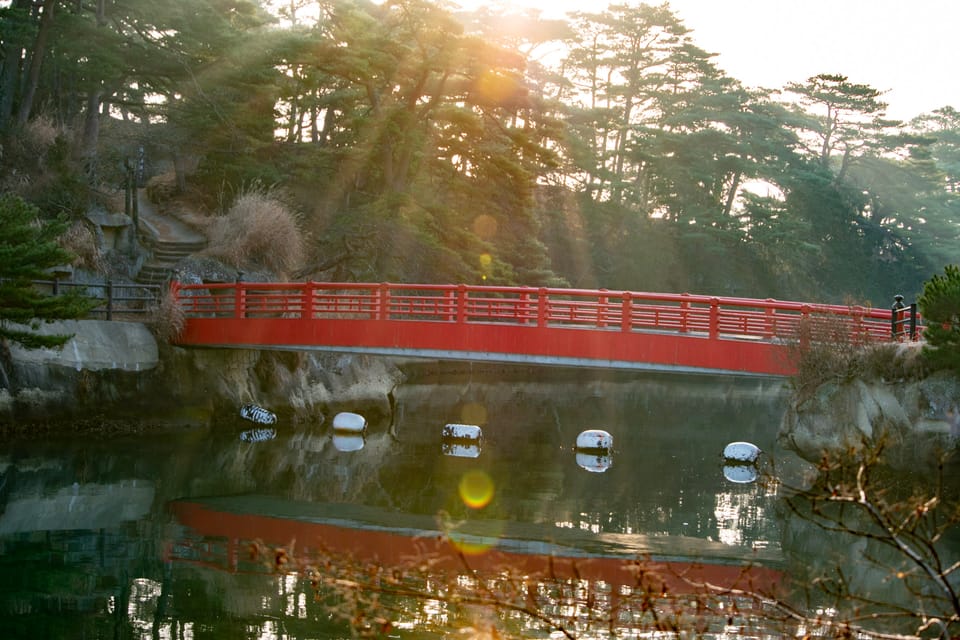
First and foremost, I thoroughly enjoyed visiting Ōshima #12. Truly a local gem, I could tell that a lot of other people love this island, as well. That said, I find it ironic that the first Ōshima I might ever visit would be, in fact, not an Ōshima at all. I mean this in the most concrete sense that only islands named 大島 count as "true" Ōshima. So, the first island I visit being spelled 雄島 ('Oshima' - a homophone) is somewhat perplexing, though I include it in my journey, nonetheless. Depending on who you ask, they might even Romanize the spelling as 'Ojima', though I never heard it called that in conversation with locals while I was there. Nevertheless, I hope this somewhat of a false start does not reflect too poorly on my dedication to a theme for this project or my conviction to see it through. I had to start somewhere!
Island Info
Location: [38°21'55.8"N 141°03'44.5"E]
Address: Namiuchihama Matsushima, Miyagi District, Miyagi 981-0213, Japan
Visit Date: 2023-01-13
Island ID: #12

Contents:
Disclaimers aside, I was lucky enough to spend about 24 hours in the presence of this magnificent little landmass right off the coast of Matsushima, a coastal town near Sendai. At the time, I was traveling from Hokkaido to Tokyo and stopped off here on the way to break up the travel across two days. The brevity of my time spent here lent me to making the most of what I had, however, and I walked away feeling quite satisfied after having visited. A bitter-sweet encounter, if ever such a thing could be shared between a traveler and an island.
Review
This island is a great destination for those interested in Japanese historical religious landmarks. As a Buddhist holy site, it certainly has a strong spiritual aura. Especially when visited at night, one can feel a deep spiritual connection between people and the land.
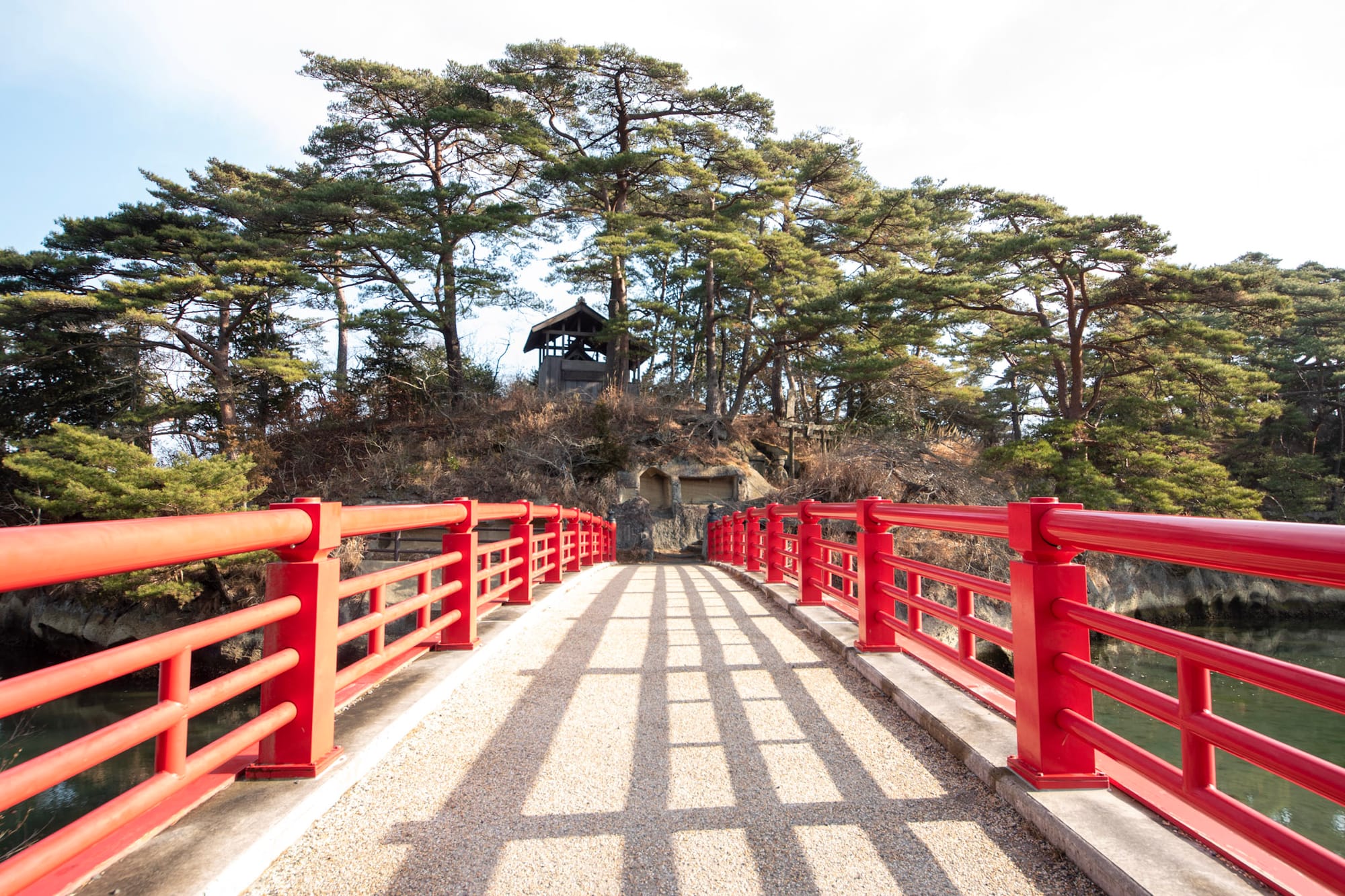
It is especially easy for anyone to visit, as the togetsukyo-style pedestrian bridge between the island and the mainland make it quite accessible. Its proximity to Matsushima Kaigan Station is quite convenient as well. The abundant conifers on this island make it a beautiful location to visit any time of year as even when I visited in the middle of winter it was still green. Coincidentally, a friend I met in Tokyo on the same trip had visited this place no more than a couple days prior to me (I only became aware after the fact, however). It is apparently a popular location for Hatsumōde as it is renowned for the spiritual power that resides here.
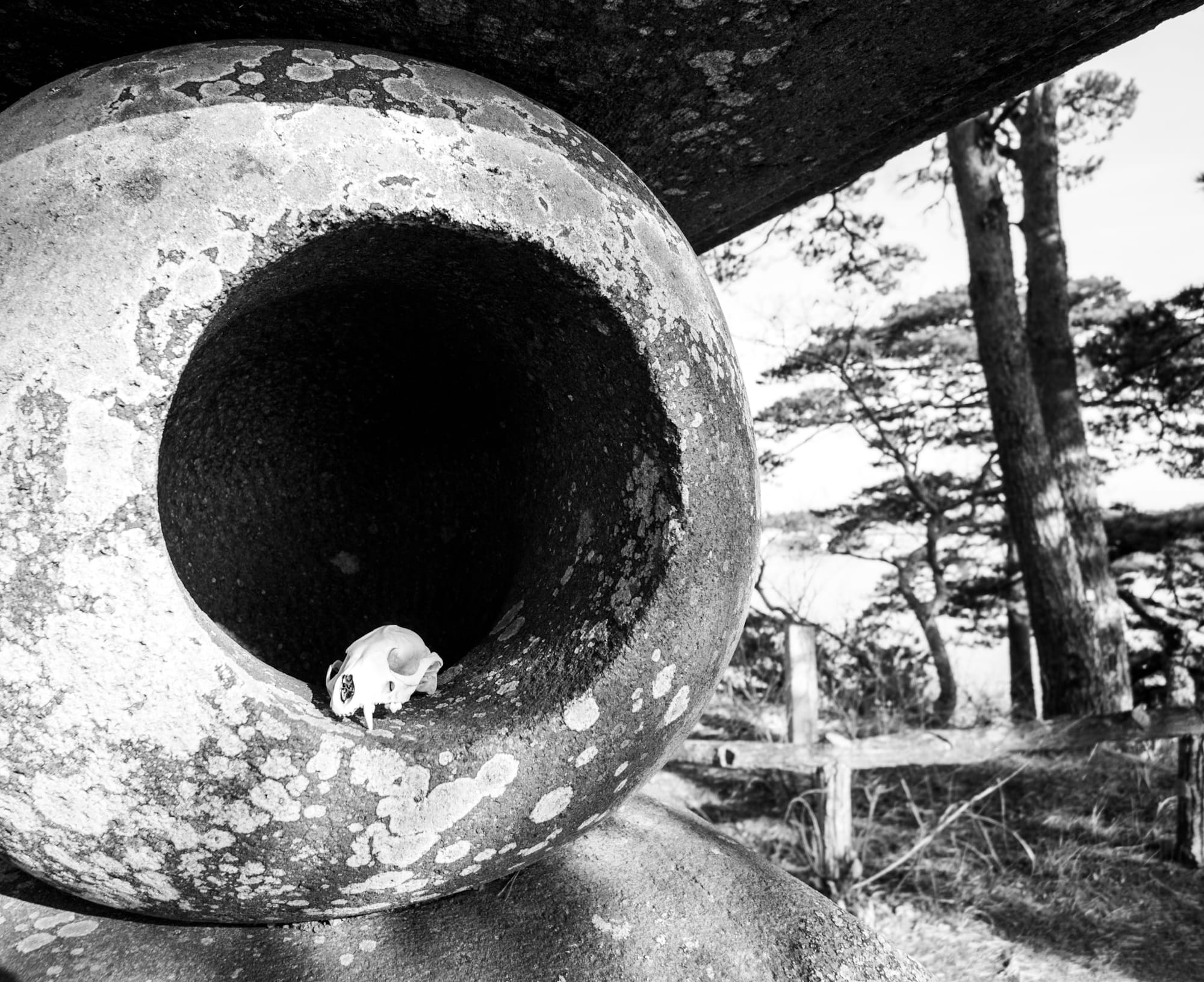
On the southern tip of the island there lies, among other structures, a hollow stone pagoda. There is a hole in the monument that is thought to lead to the underworld, prompting visitors to leave the ashes of those who have passed and pray for their peace in the afterlife.
Landmarks

Notable landmarks on this island include:
- Dozens of caves carved directly into the limestone stone walls of the island.
- A tunnel that pierces straight through from one side of the island to the other.
- Buddhist stone memorial tablets and figures of the Buddha, himself.
- Tall stones inscribed with poetry and prayers.
- A network of footpaths for easily traversing the island.
- Several pagodas, both stone and wood.
- Stone torii and an elegant togetsukyo bridge connecting the island to the mainland.
- Amazing views of the bay of Matsushima, one of the Three Views of Japan (日本三景).
All in all, I very much enjoyed my laid-back yet frenzied visit to this honorary Ōshima. A definite gem of a landmark to be certain, I highly recommend paying this island a visit.
History

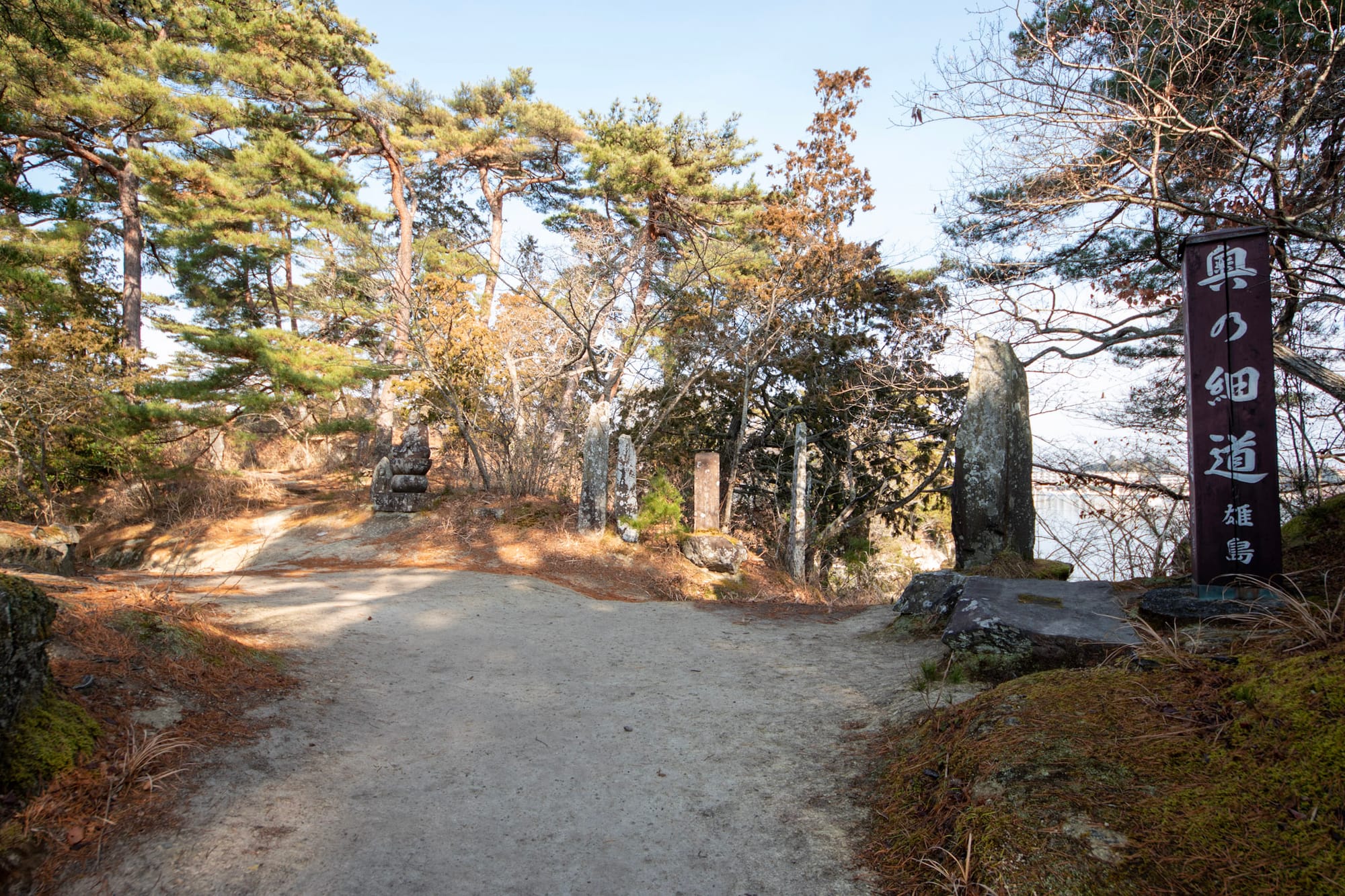
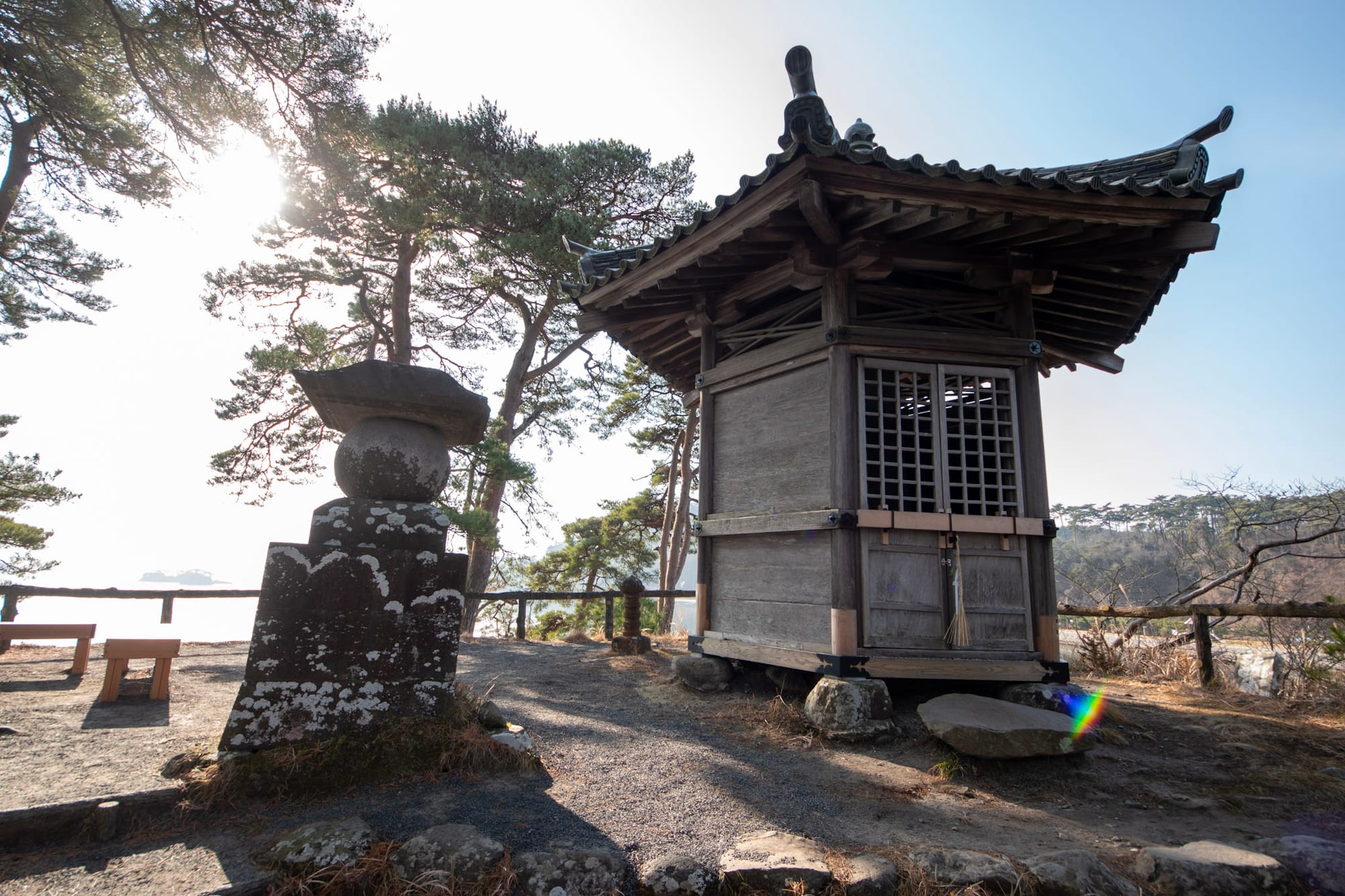
The whole island is a Buddhist pilgrimage site and is the central focus of many local folktales. It is said that the town of Matsushima would not exist without these hallowed grounds. A famous Buddhist pilgrim named Kenbutsu Shonin is said to have spent over a decade reciting 60,000 sutras on the island. Legend has it that, in his dedication to prayer, Kenbutsu Shonin gained supernatural abilities on this island, including the power of flight. A famous haiku poet, Matsuo Basho once began a journey in Matsushima, beginning here. At one time, there were up to 108 caves carved into the limestone here, though today only about half of them are still discernable. Memorial services for the deceased were once commonly held on this island, as well. In more recent history, the 2011 Tōhoku Earthquake and the following tsunami that impacted Sendai also destroyed the original bridge to this island; the bridge standing today was rebuilt in 2013 after the style of the original.
Gallery

Daytime
The surrounding areas are beautiful, though I was only able to see them at sunrise, so my opinion may be highly skewed.
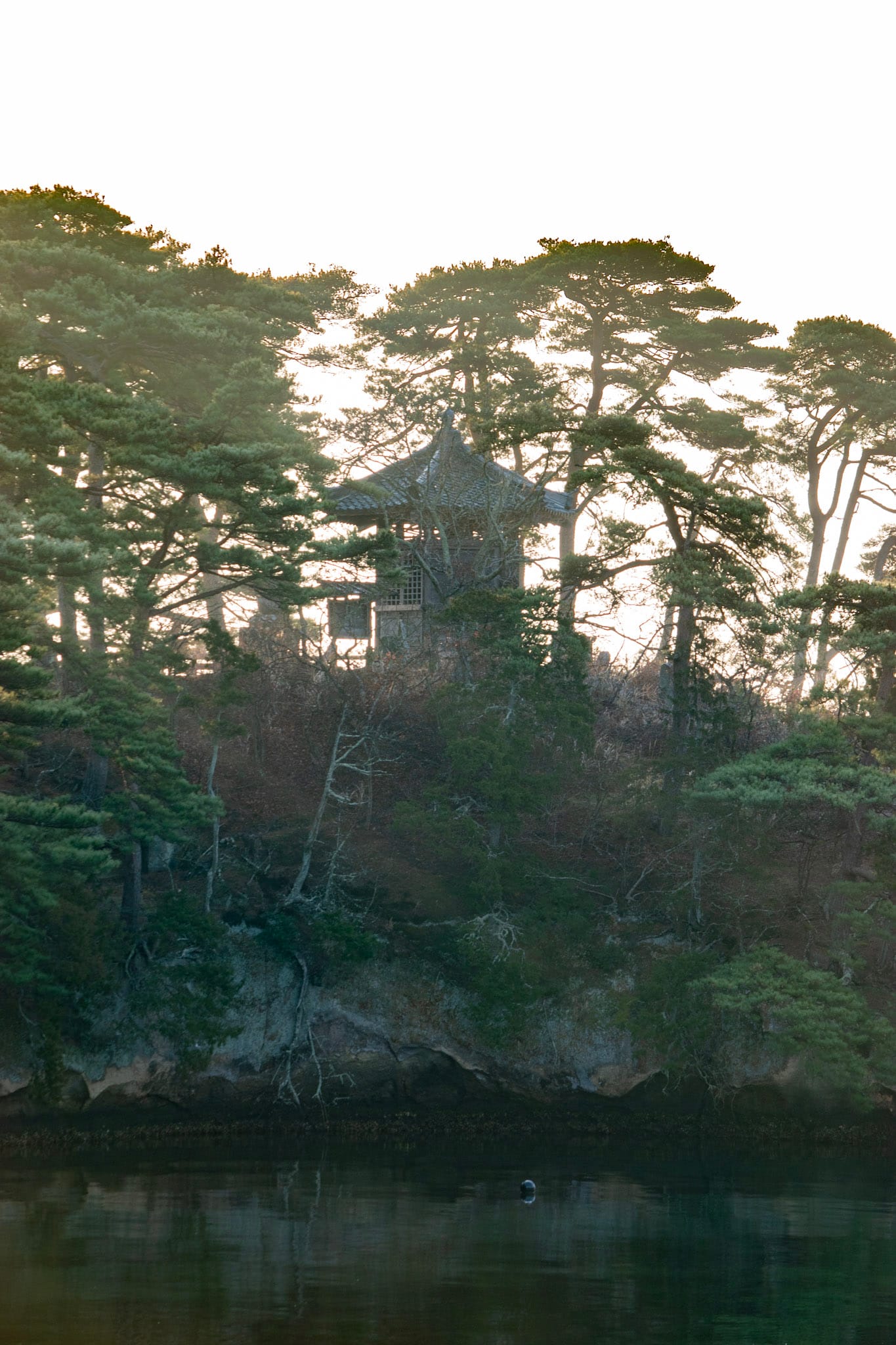
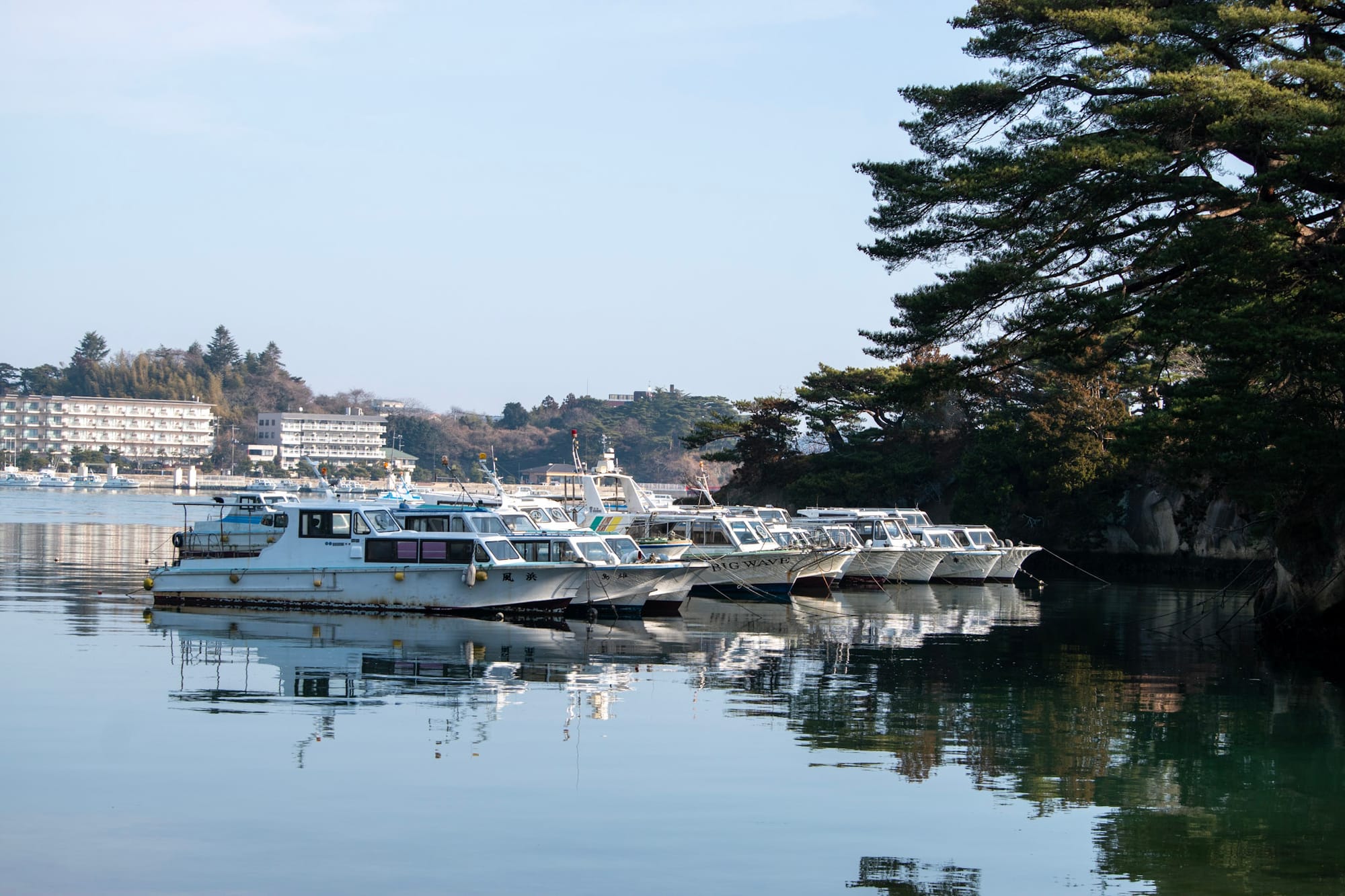
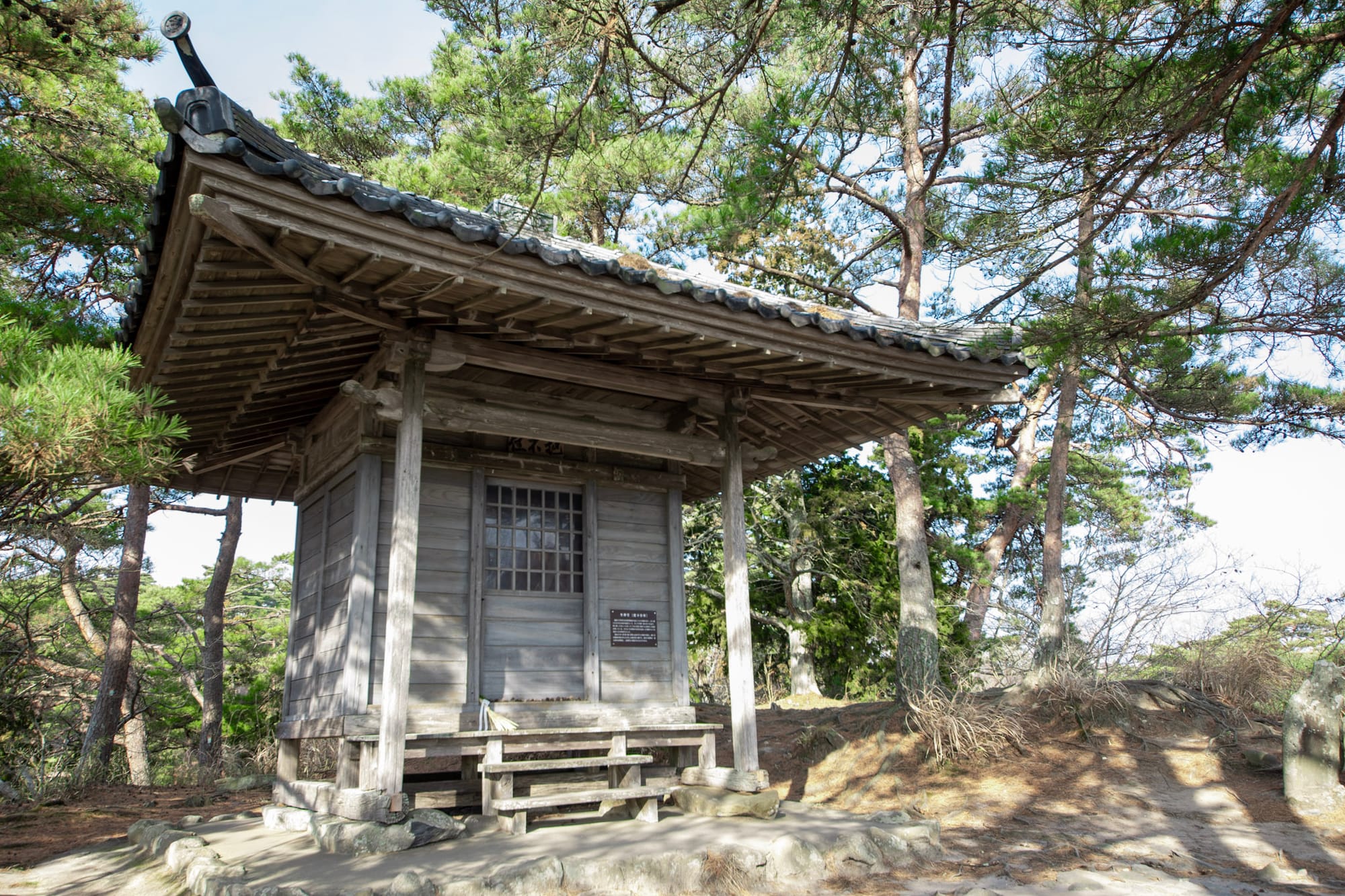
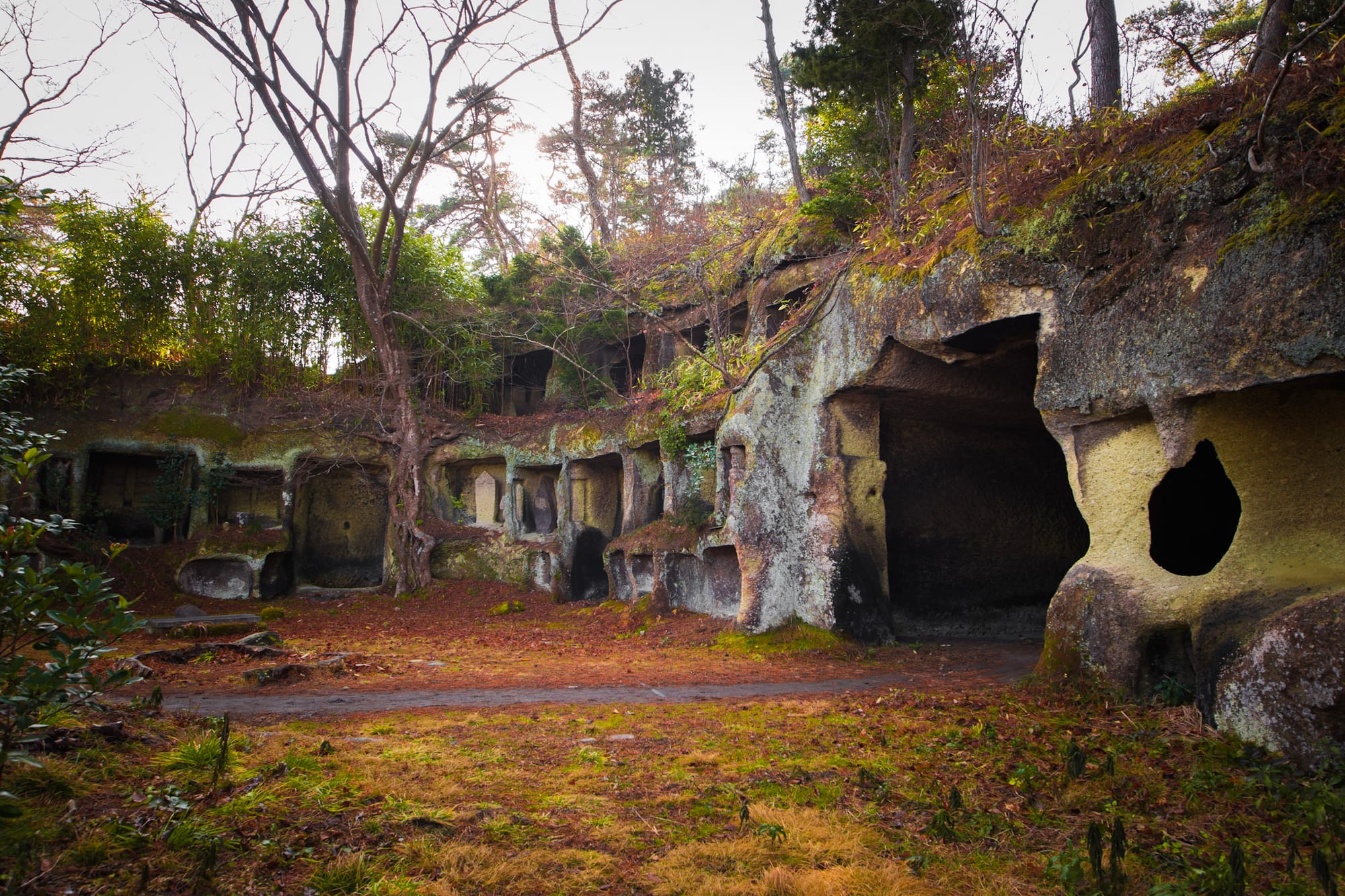

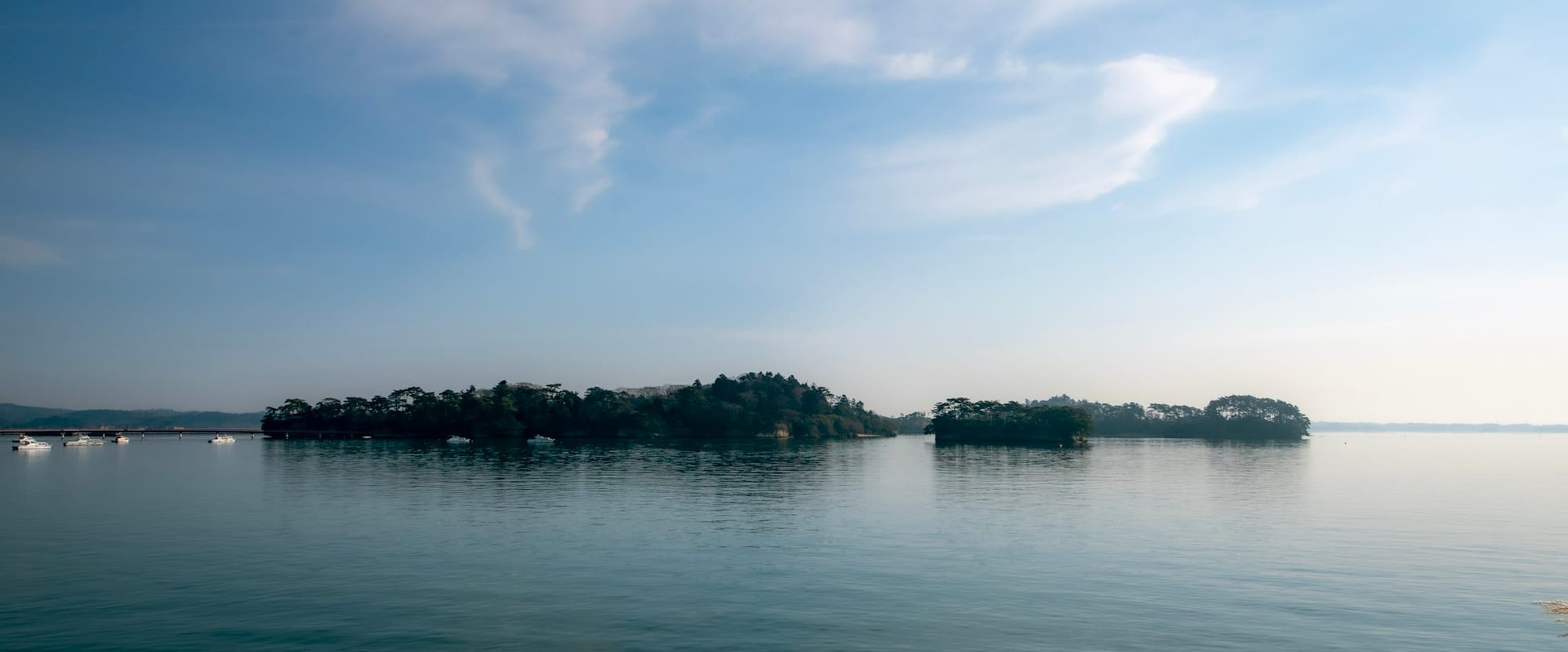
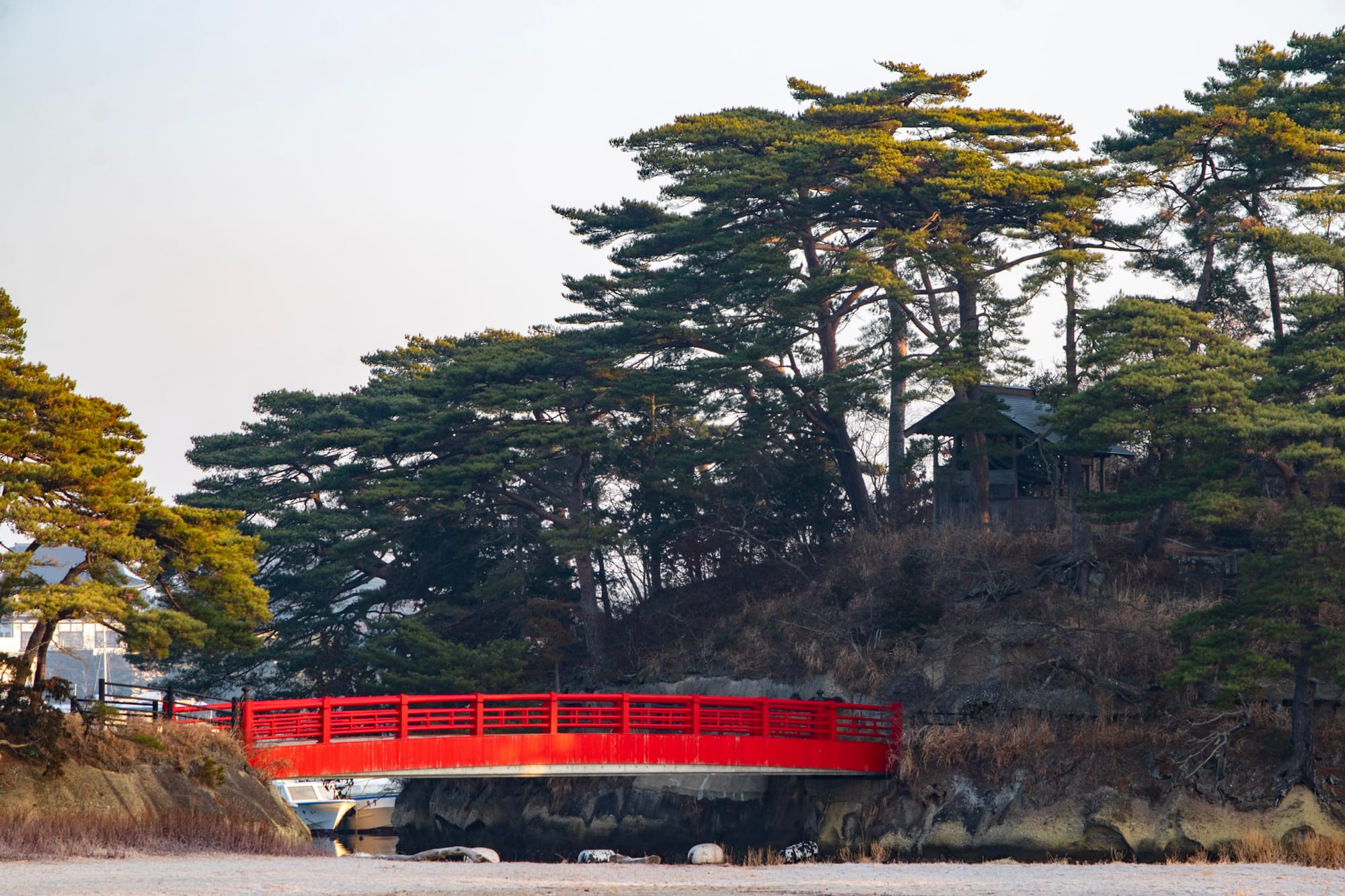
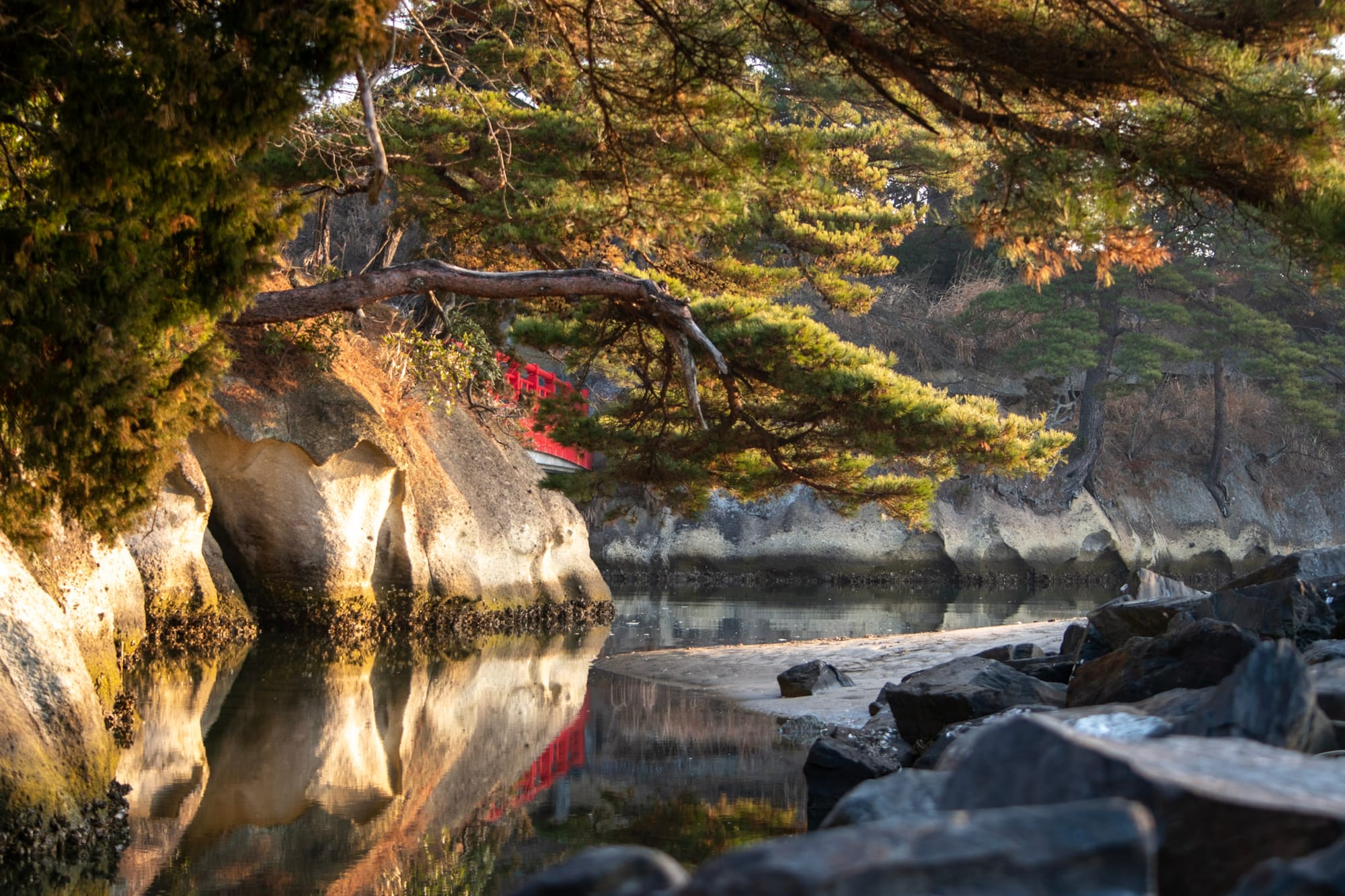
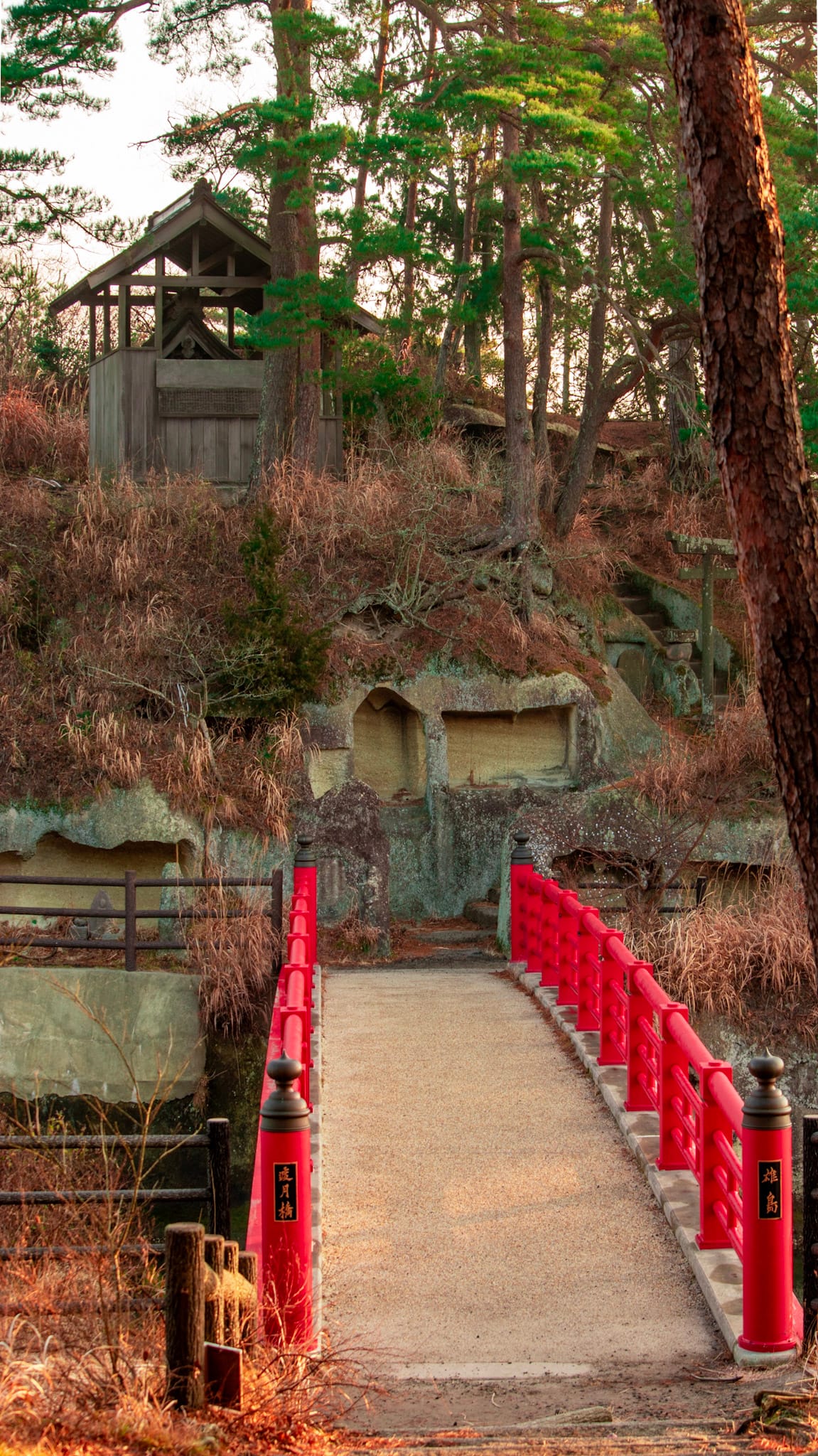
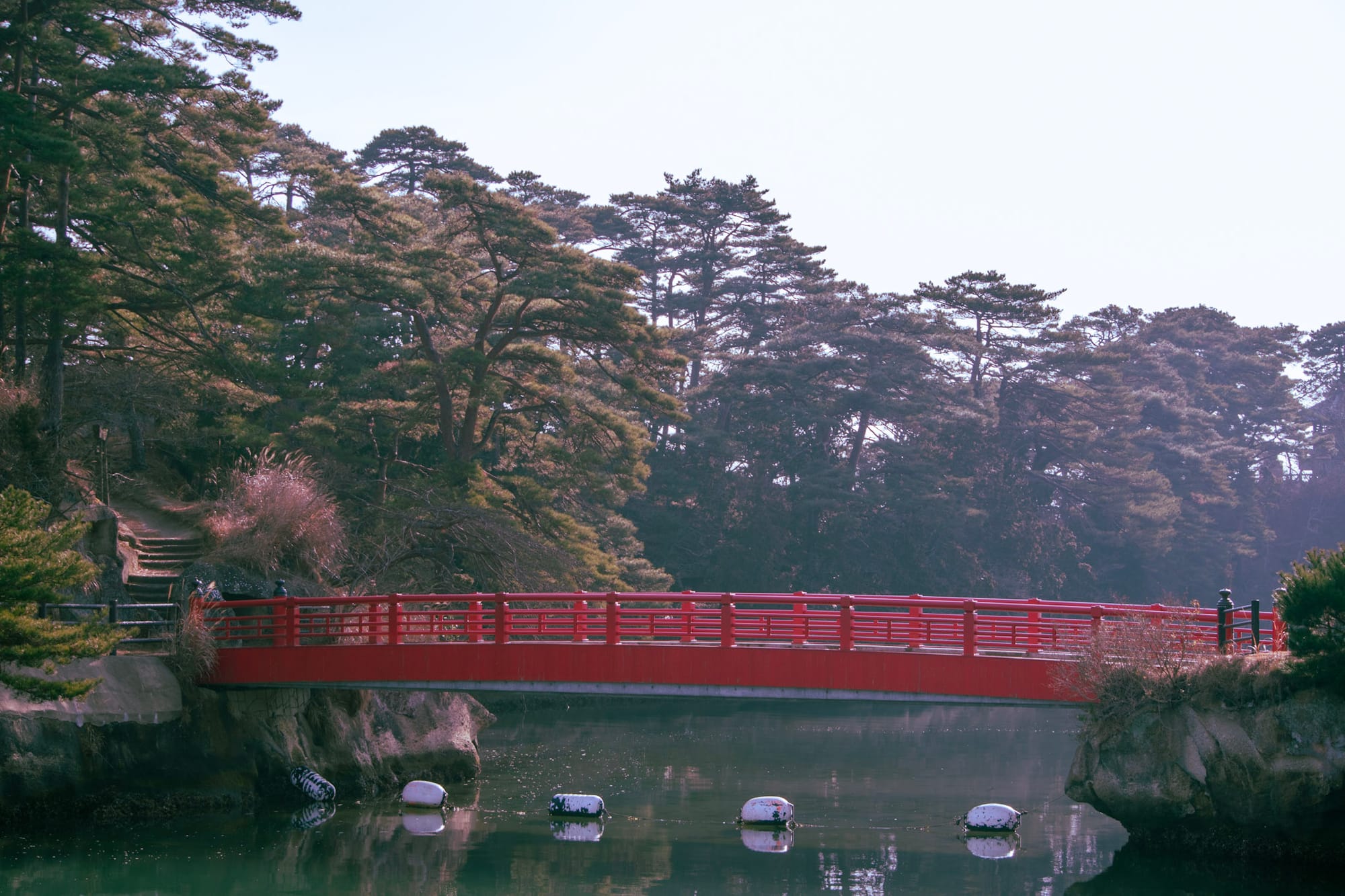
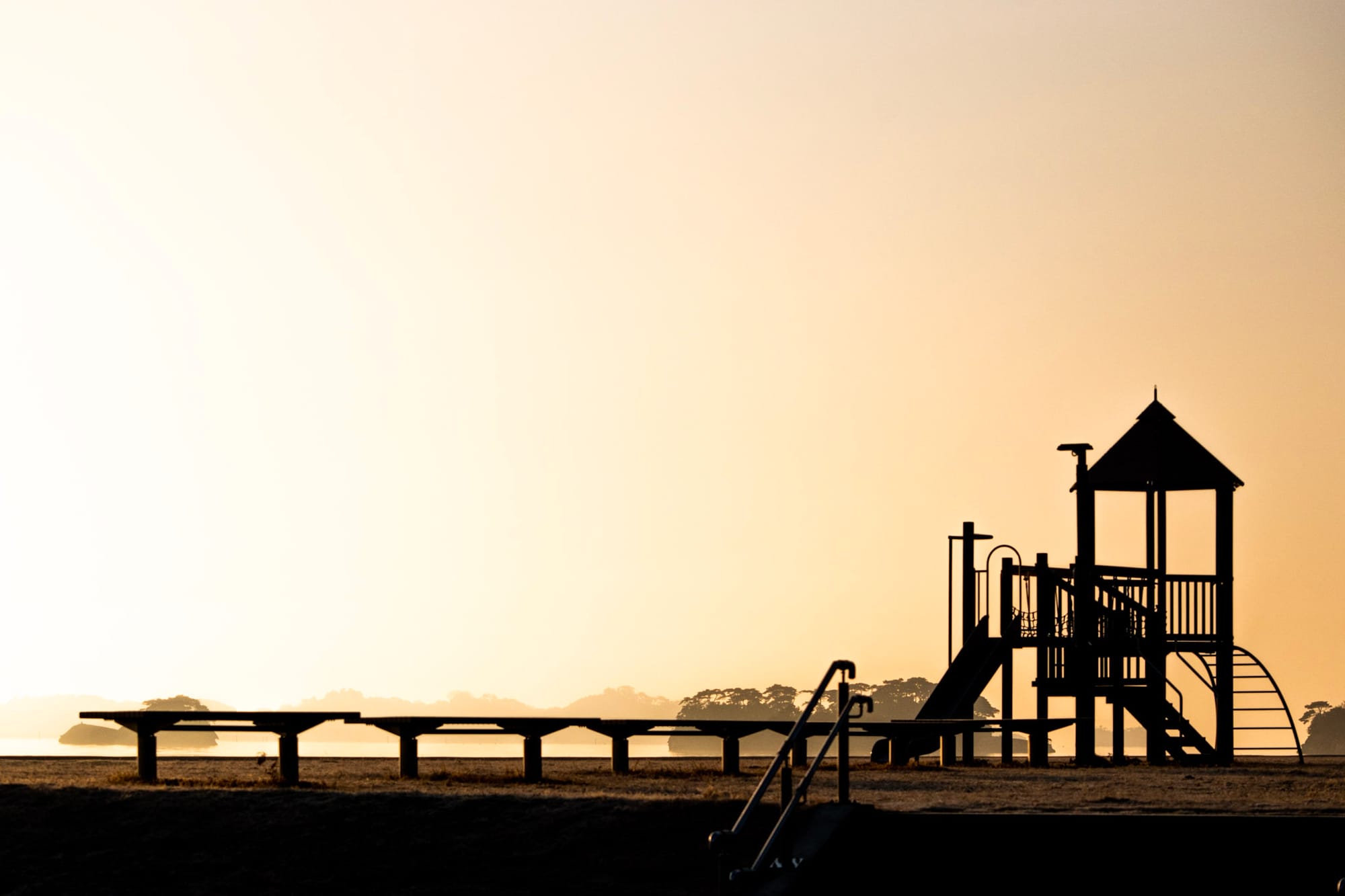
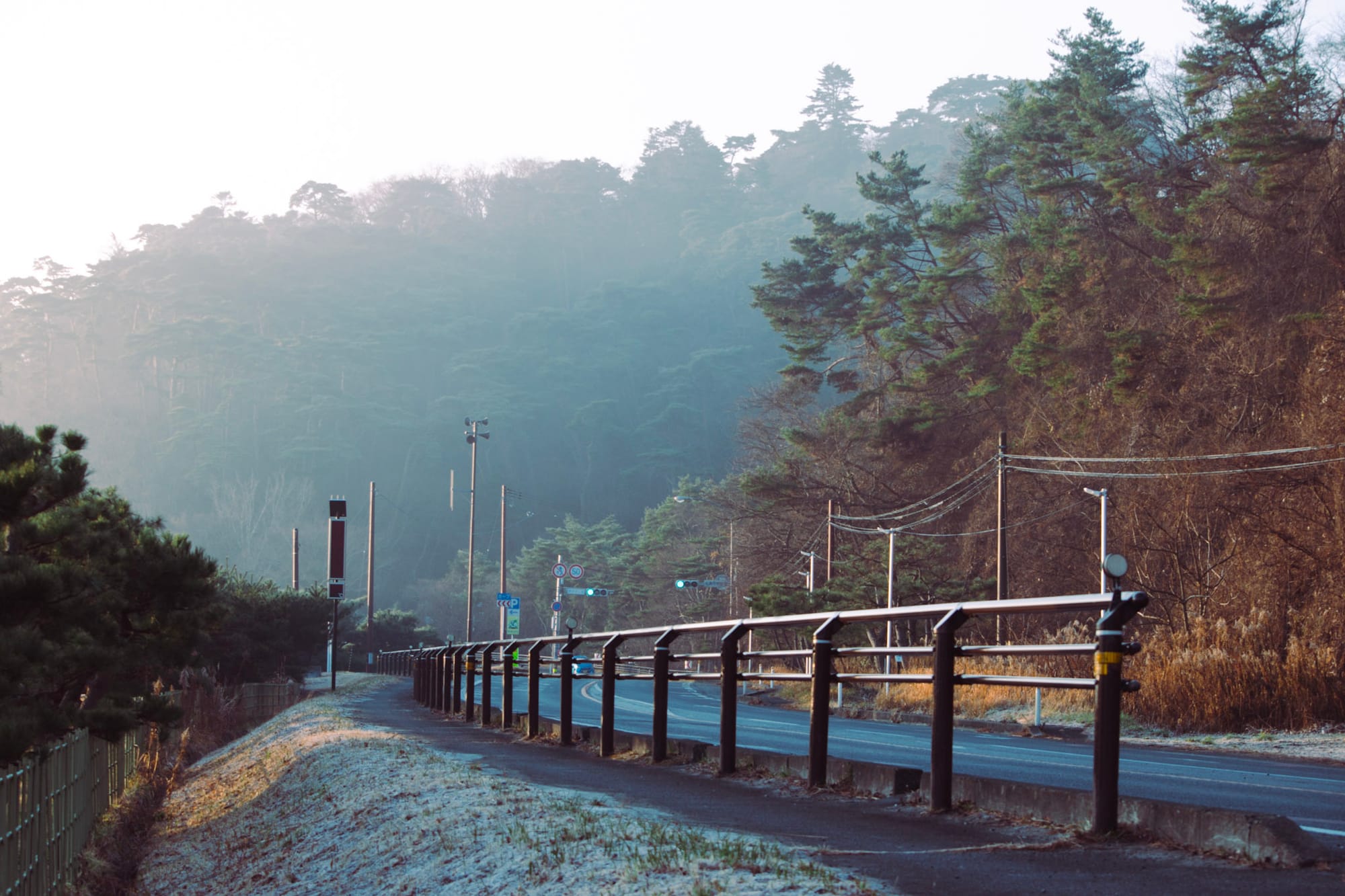
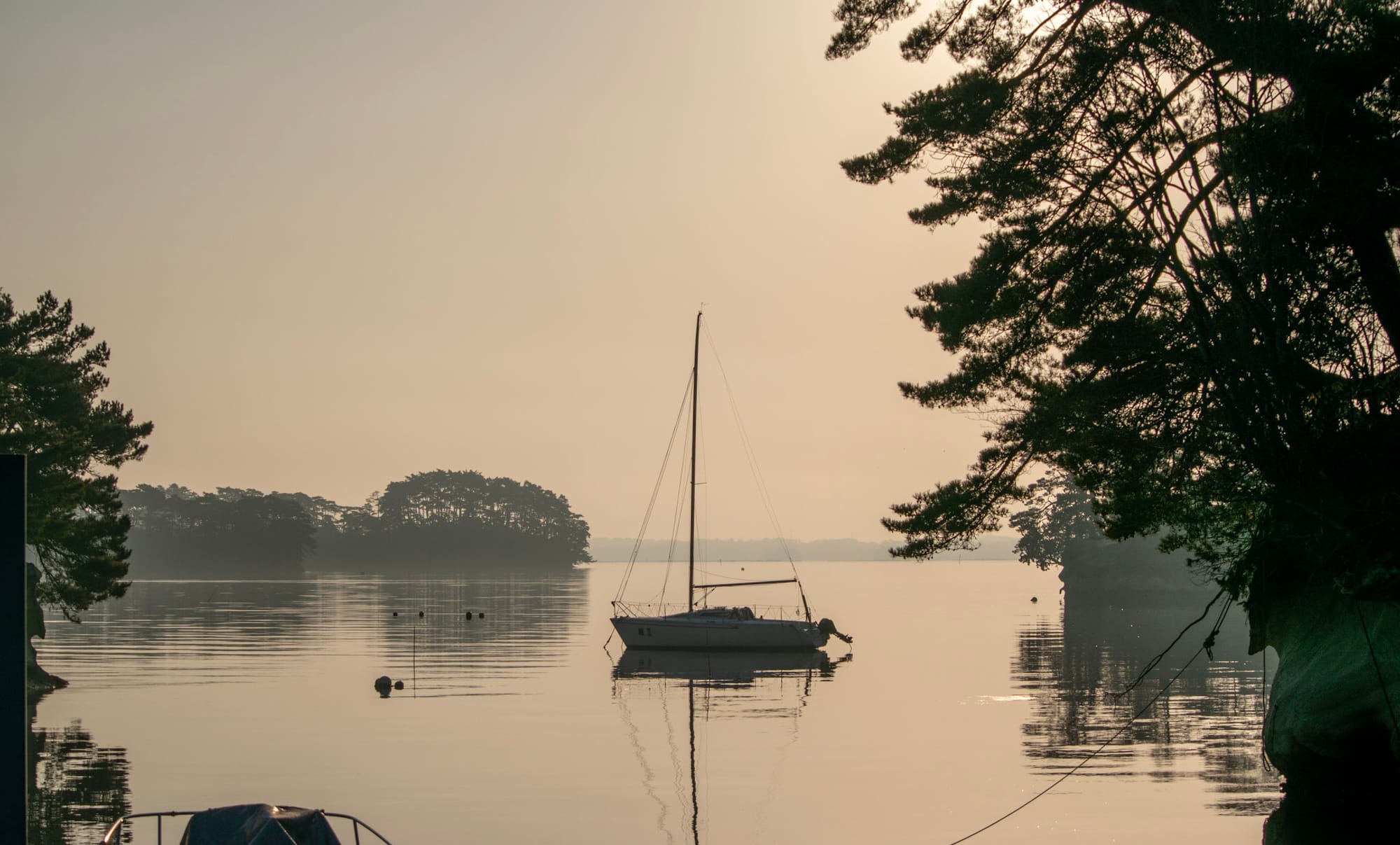
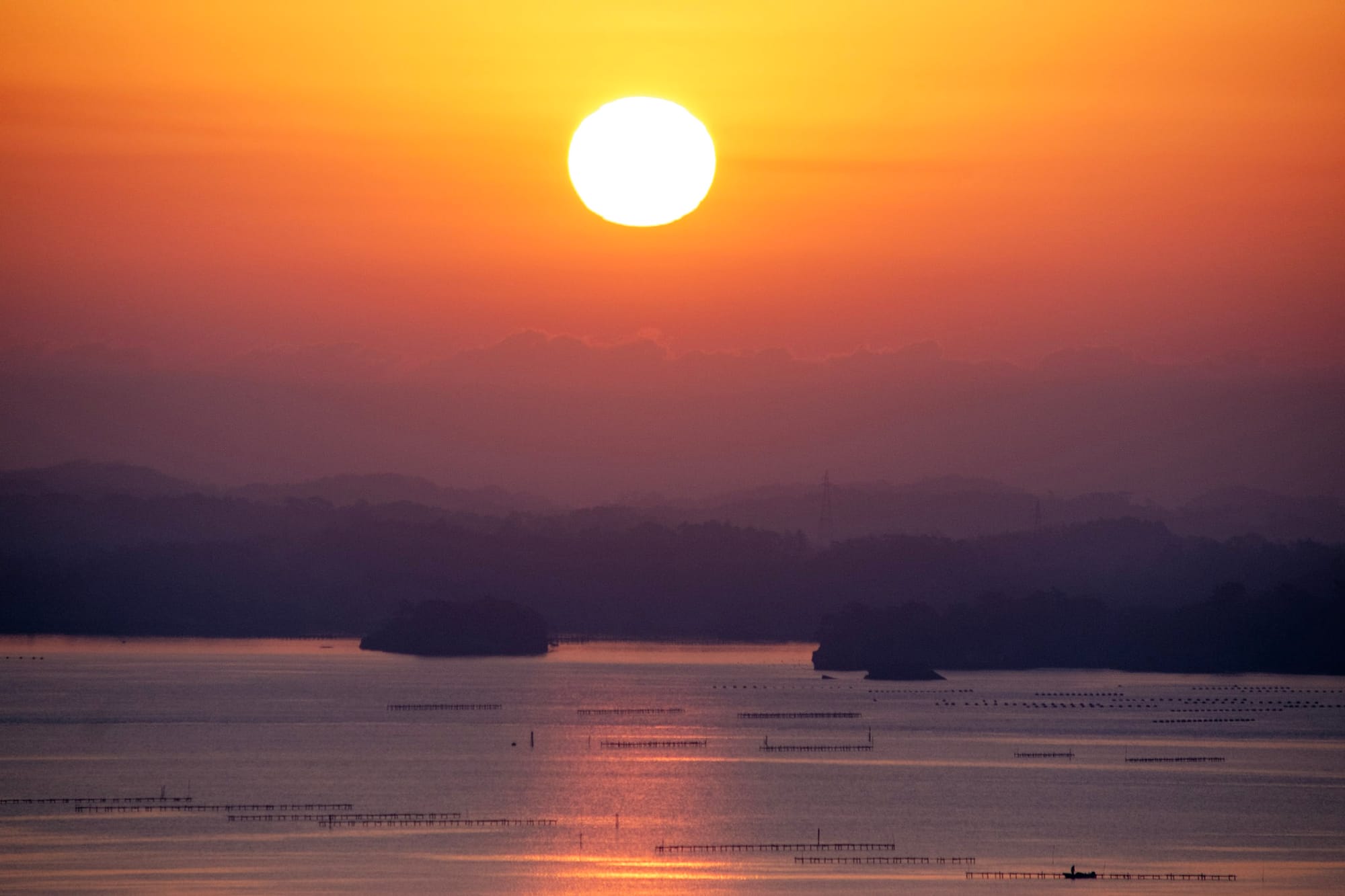
Areas nearby Ōshima #12, though not on the island itself.

Nighttime
One of the nearby hotels had a bright green spotlight pointed down at the bay which set an eerie green cast to many of the photos at night.
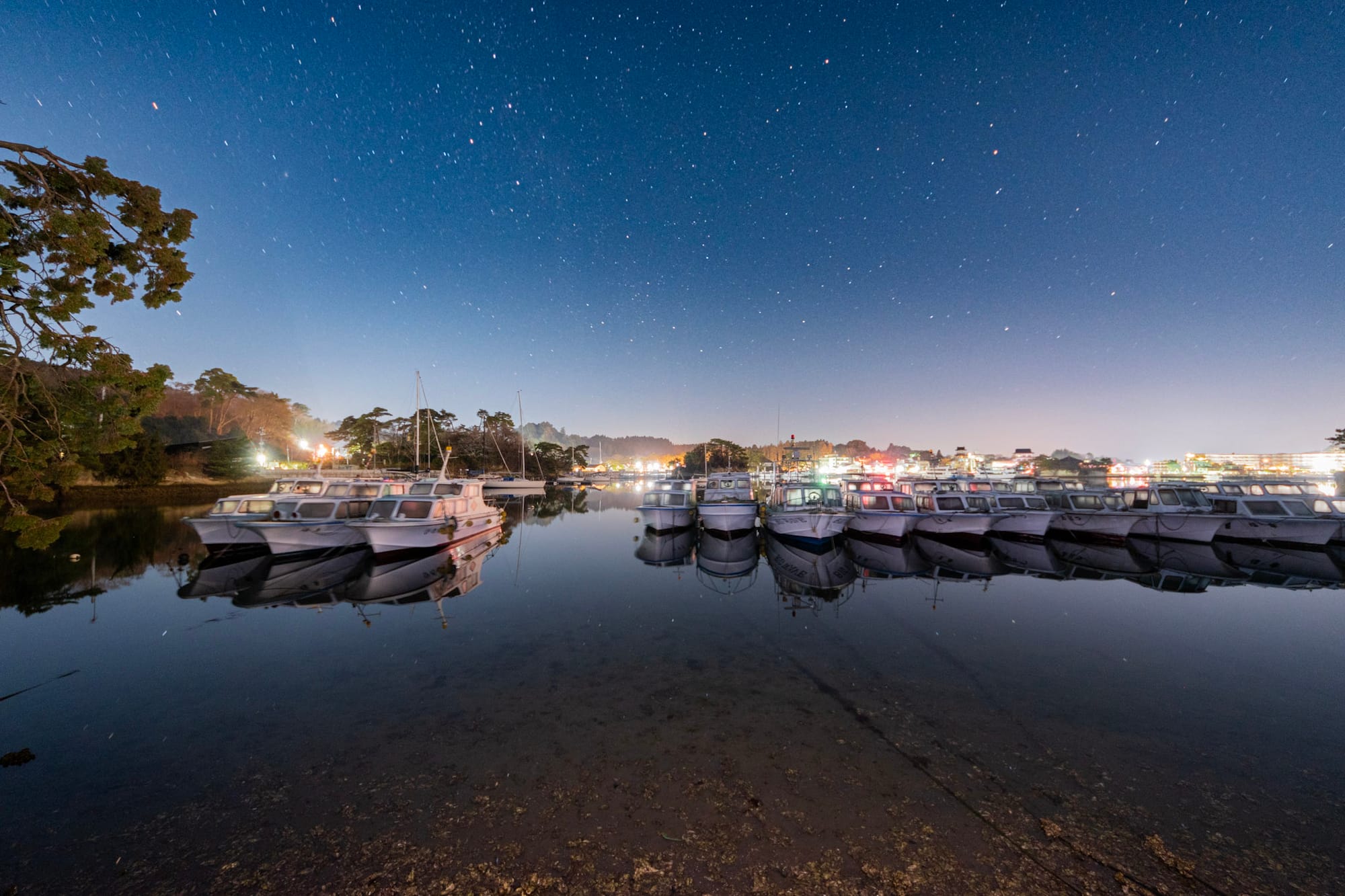
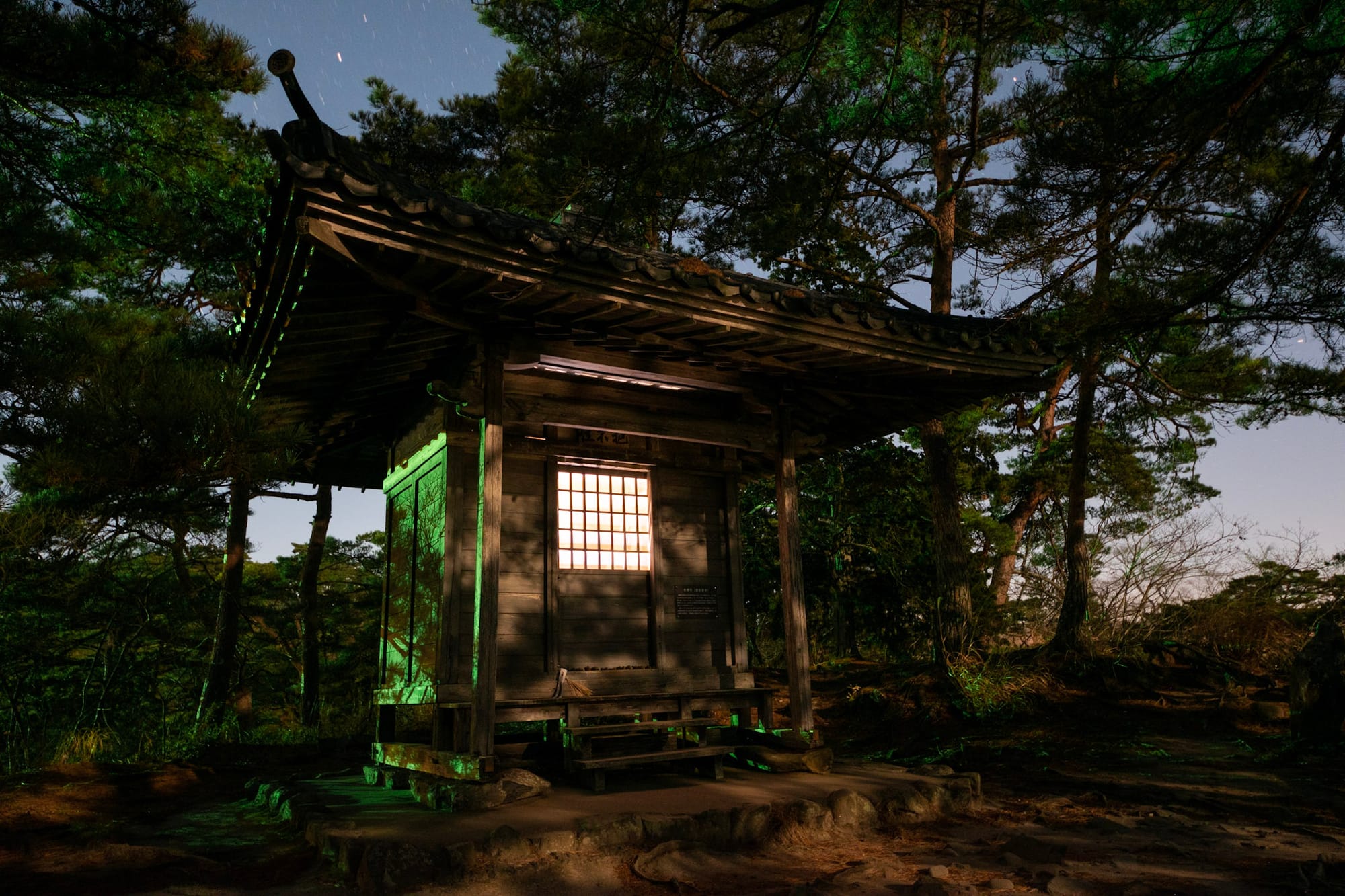
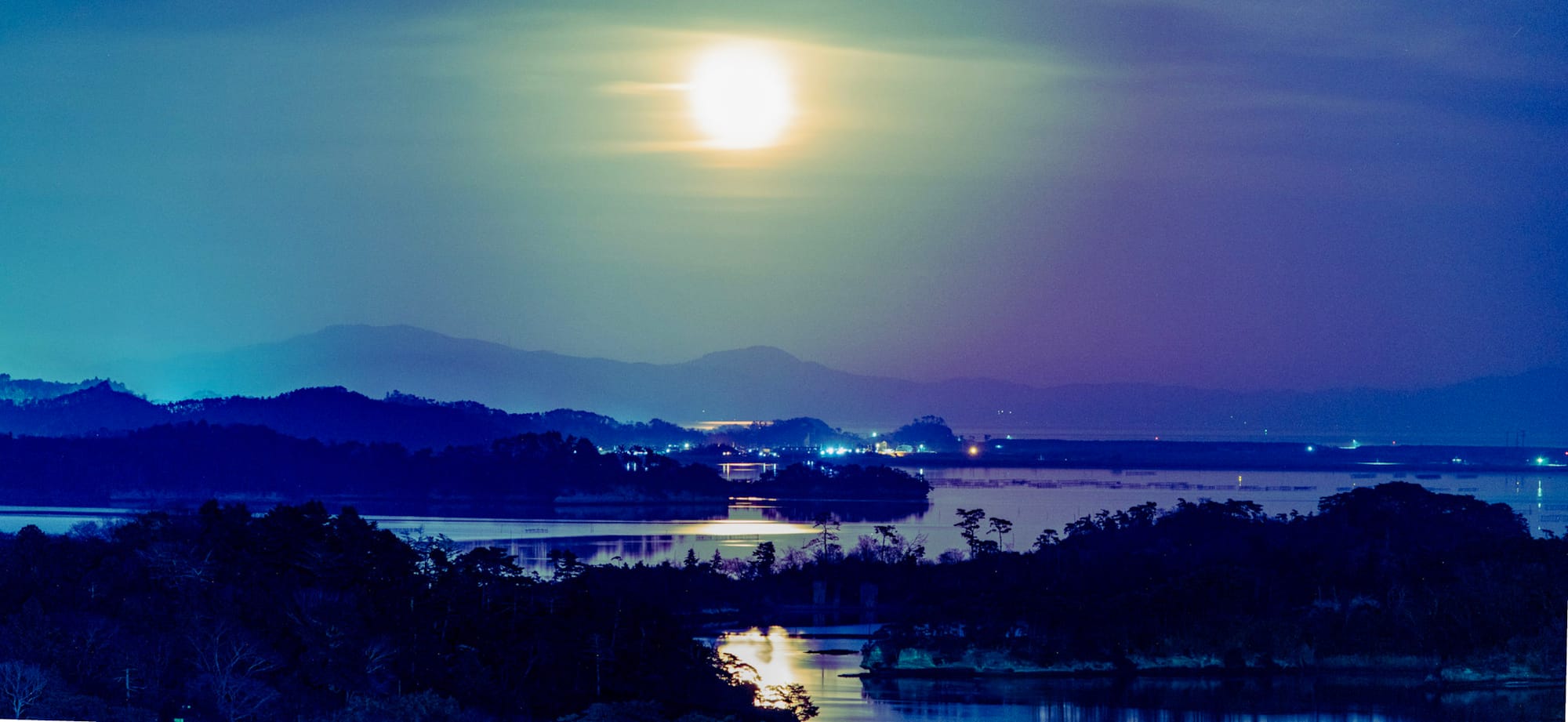

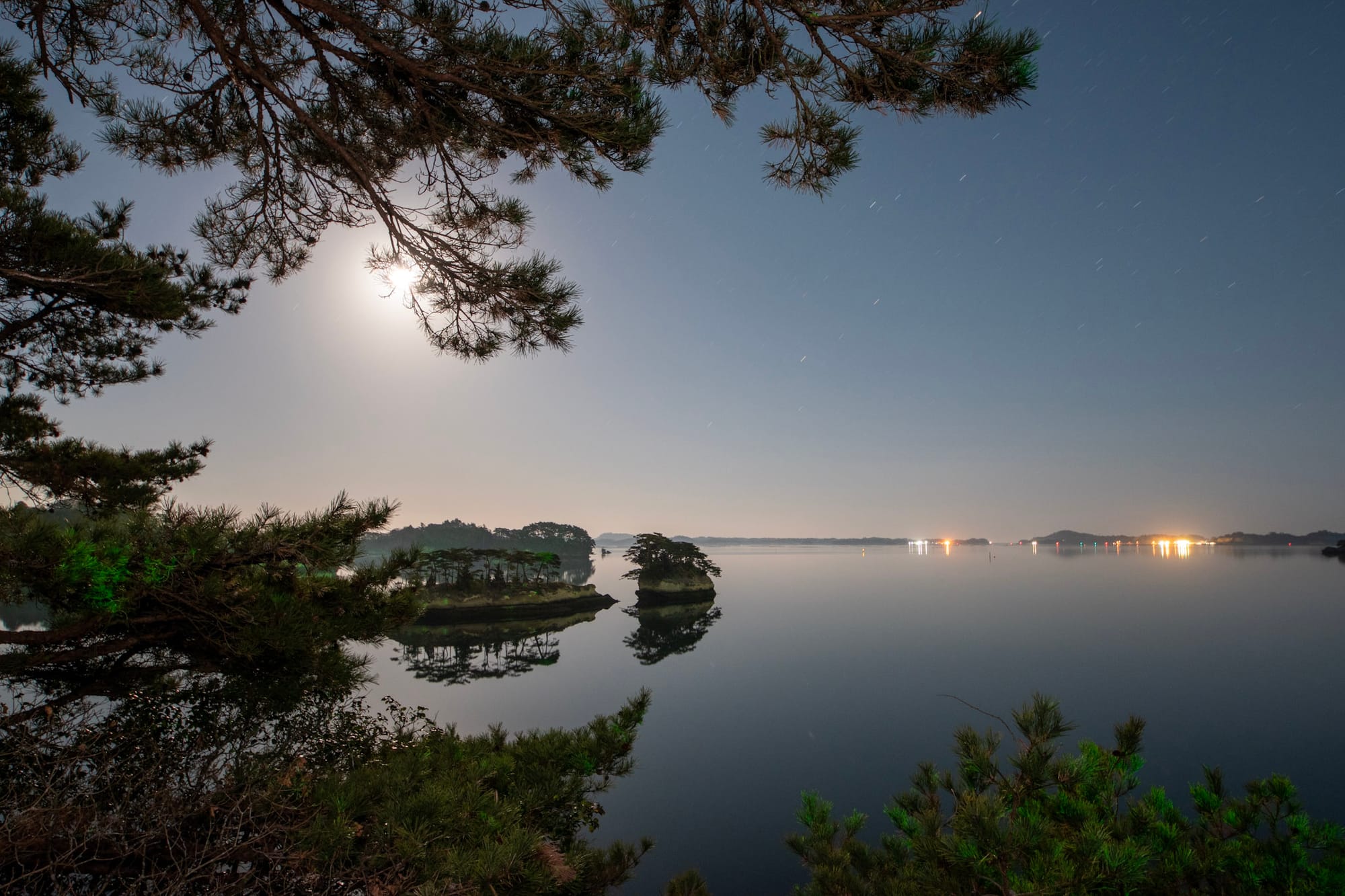
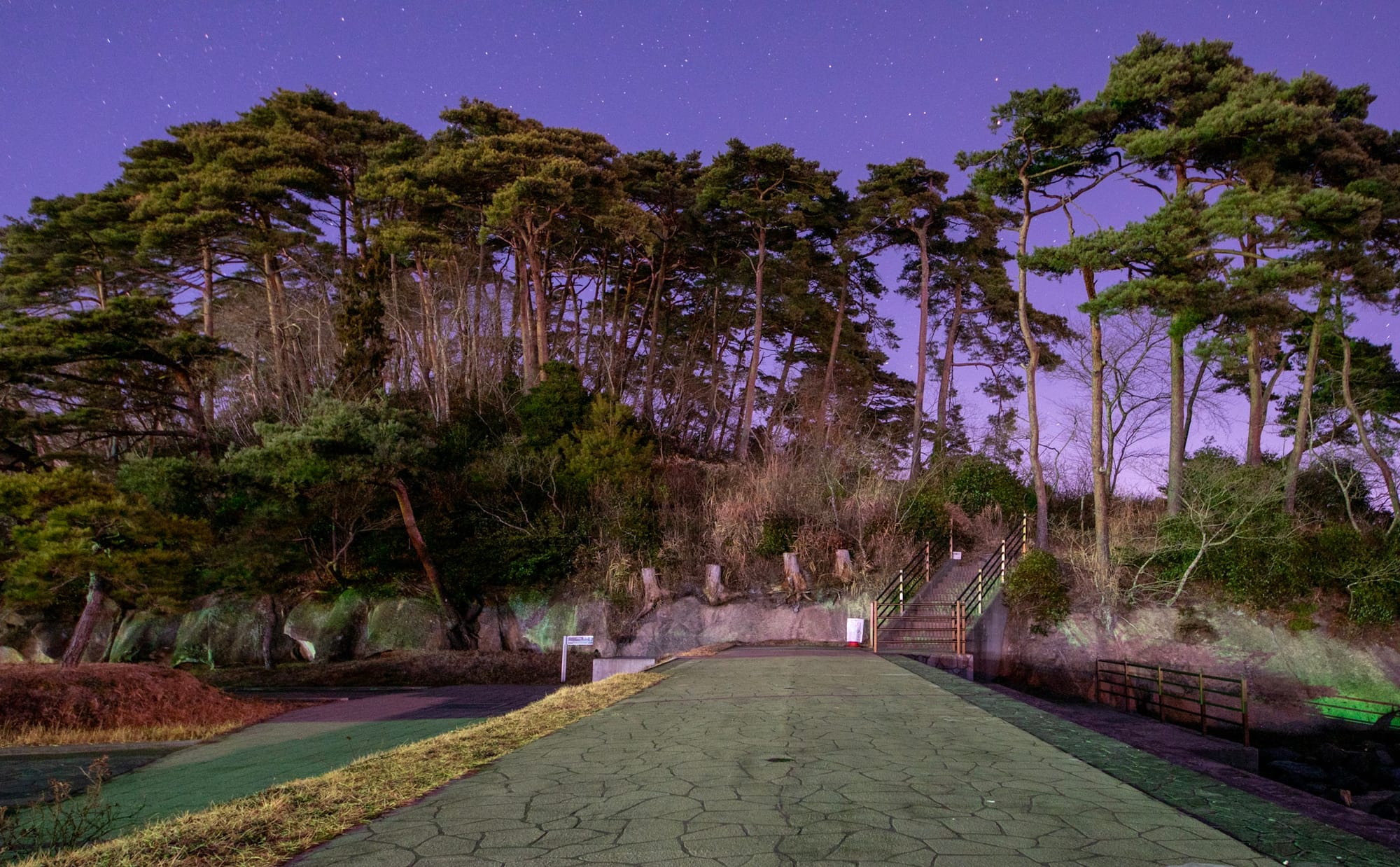
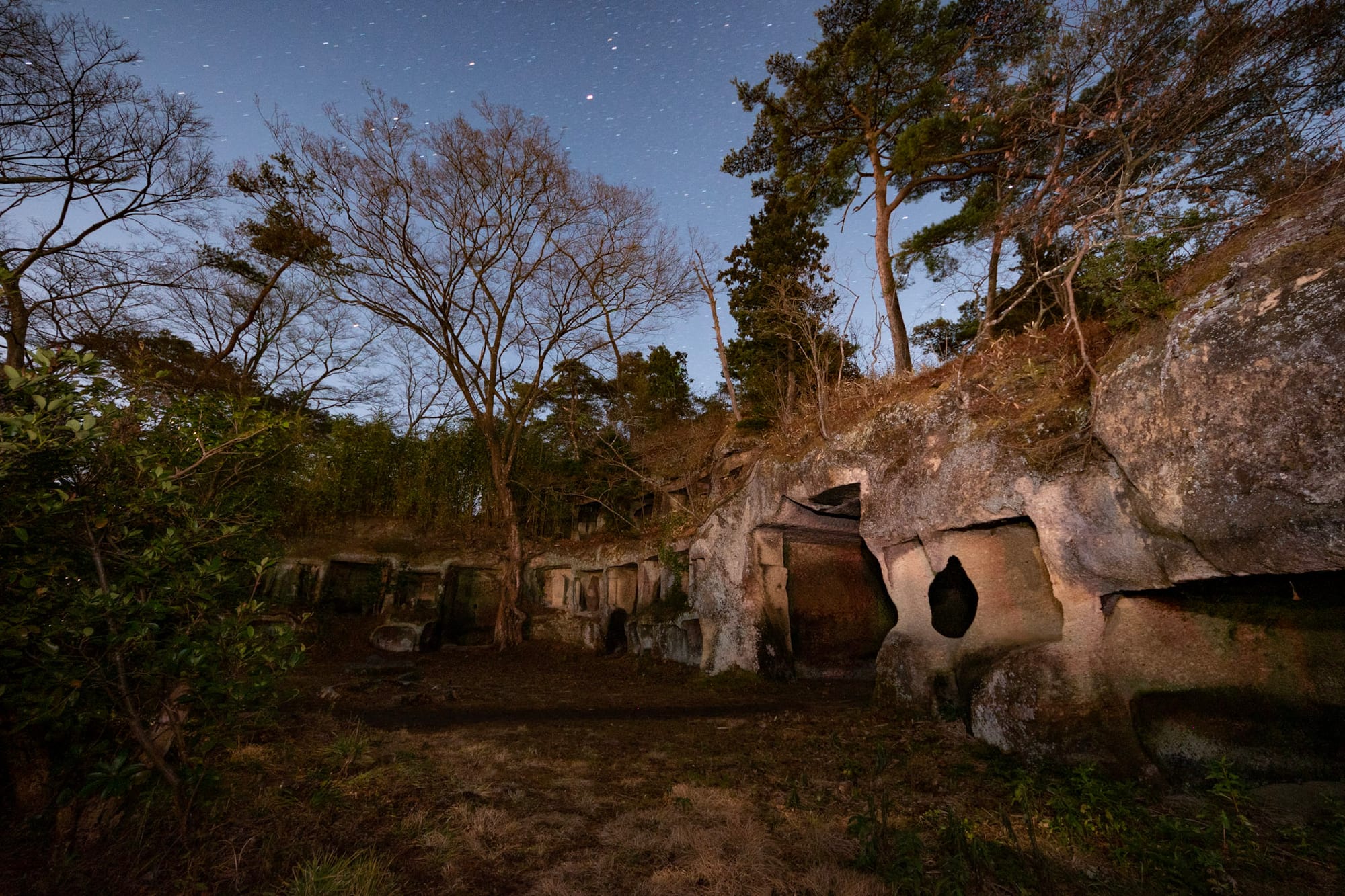

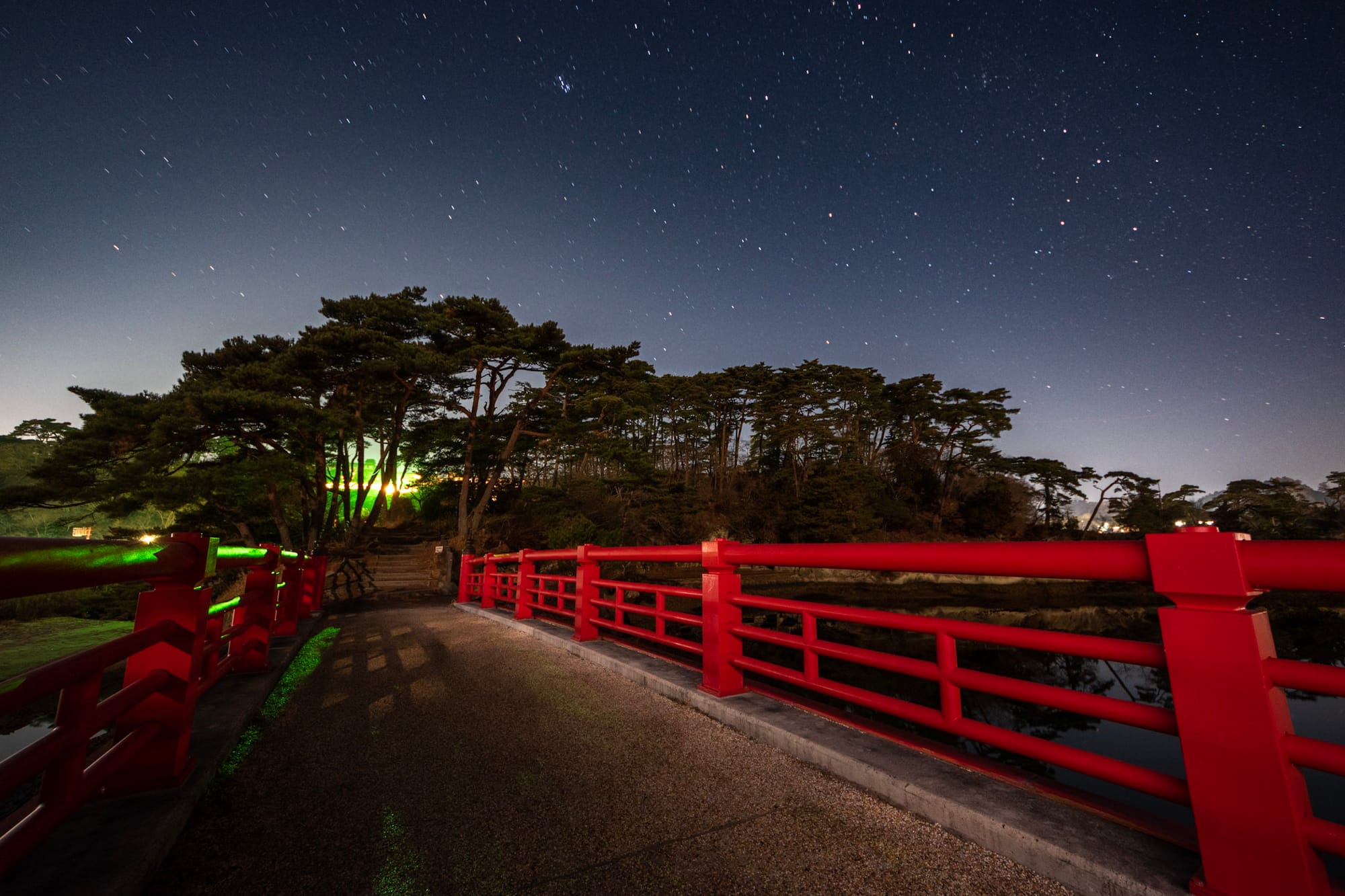

Infrared
I like to take false-color imagery using the infrared spectrum, yielding fantastical effects.
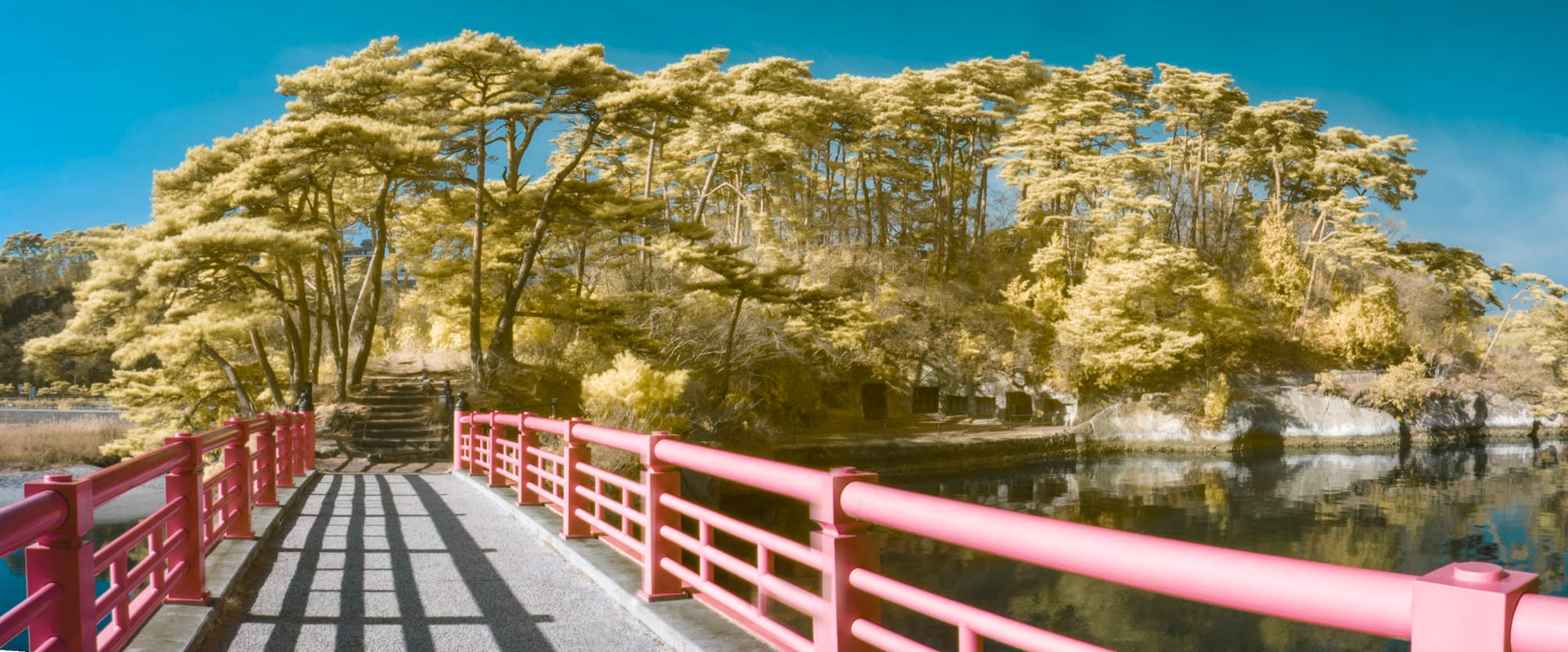
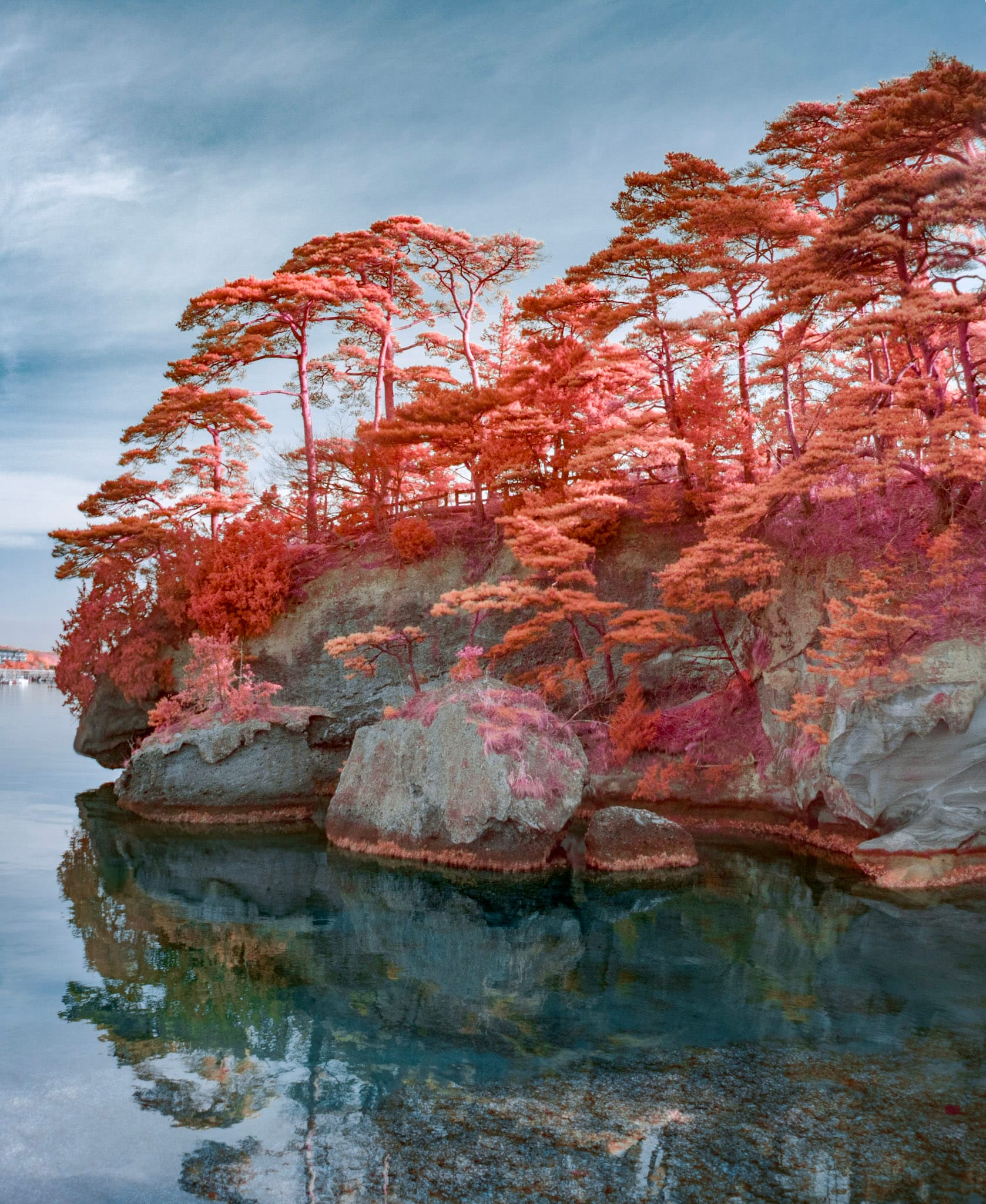
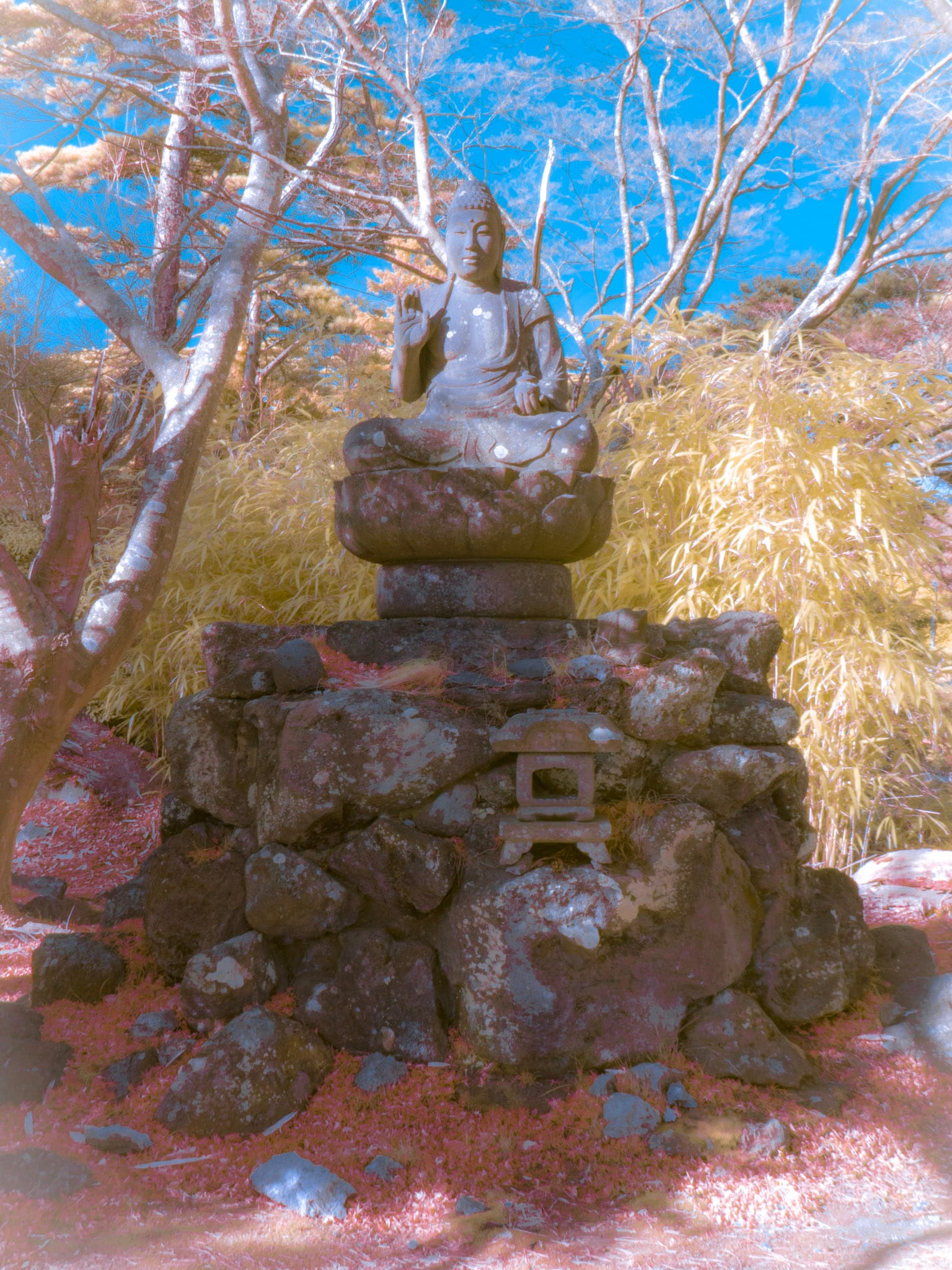

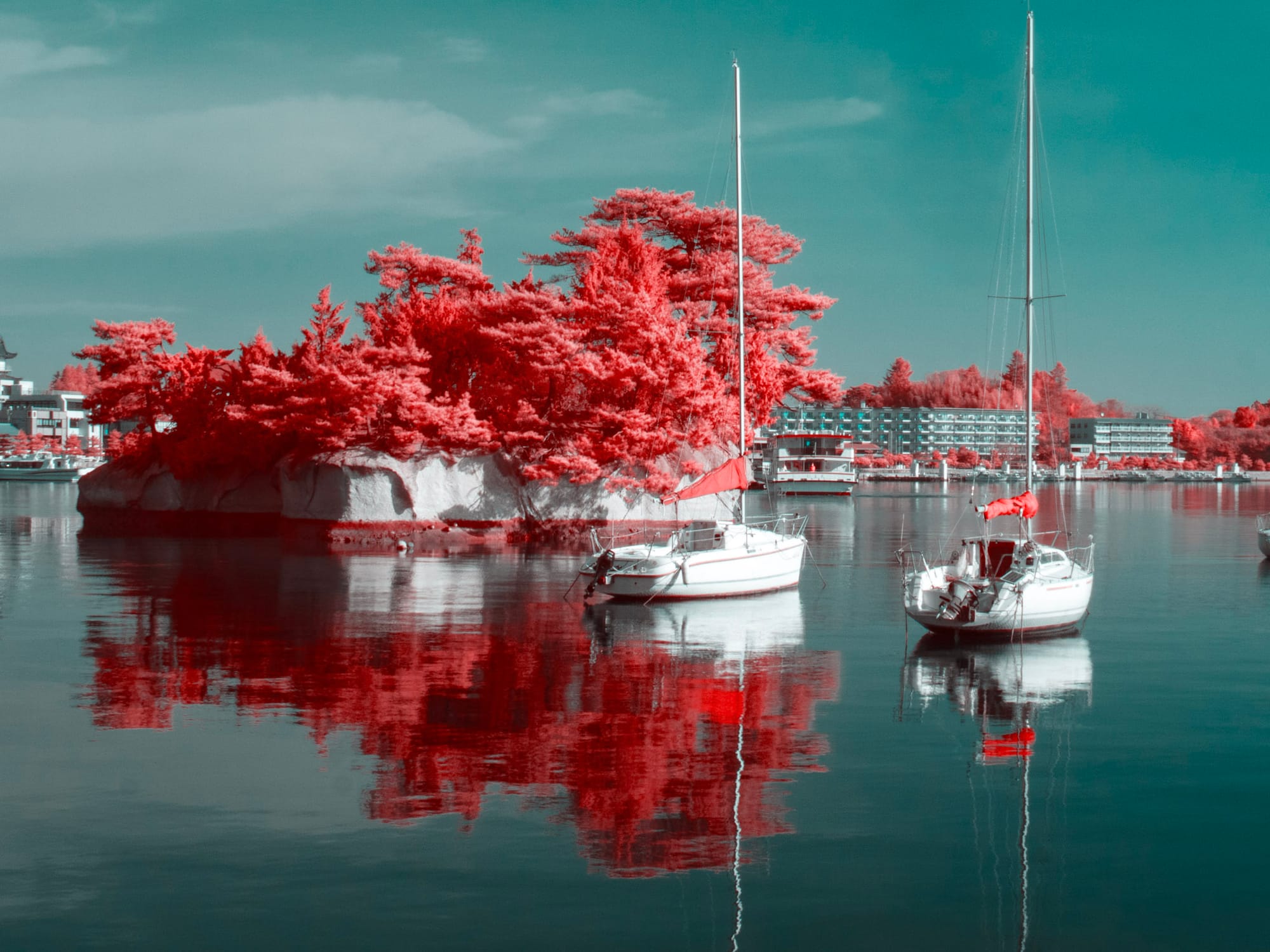
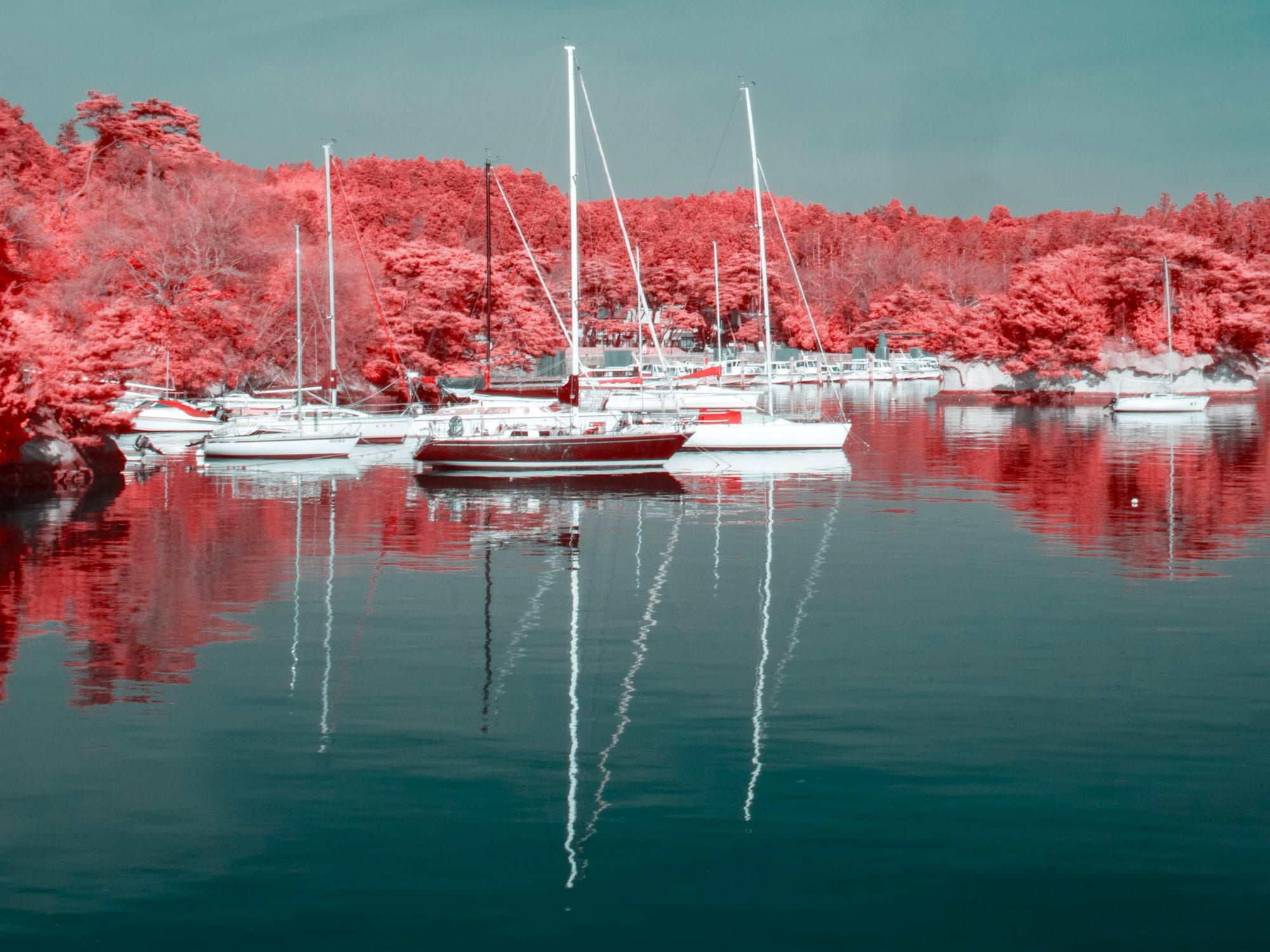
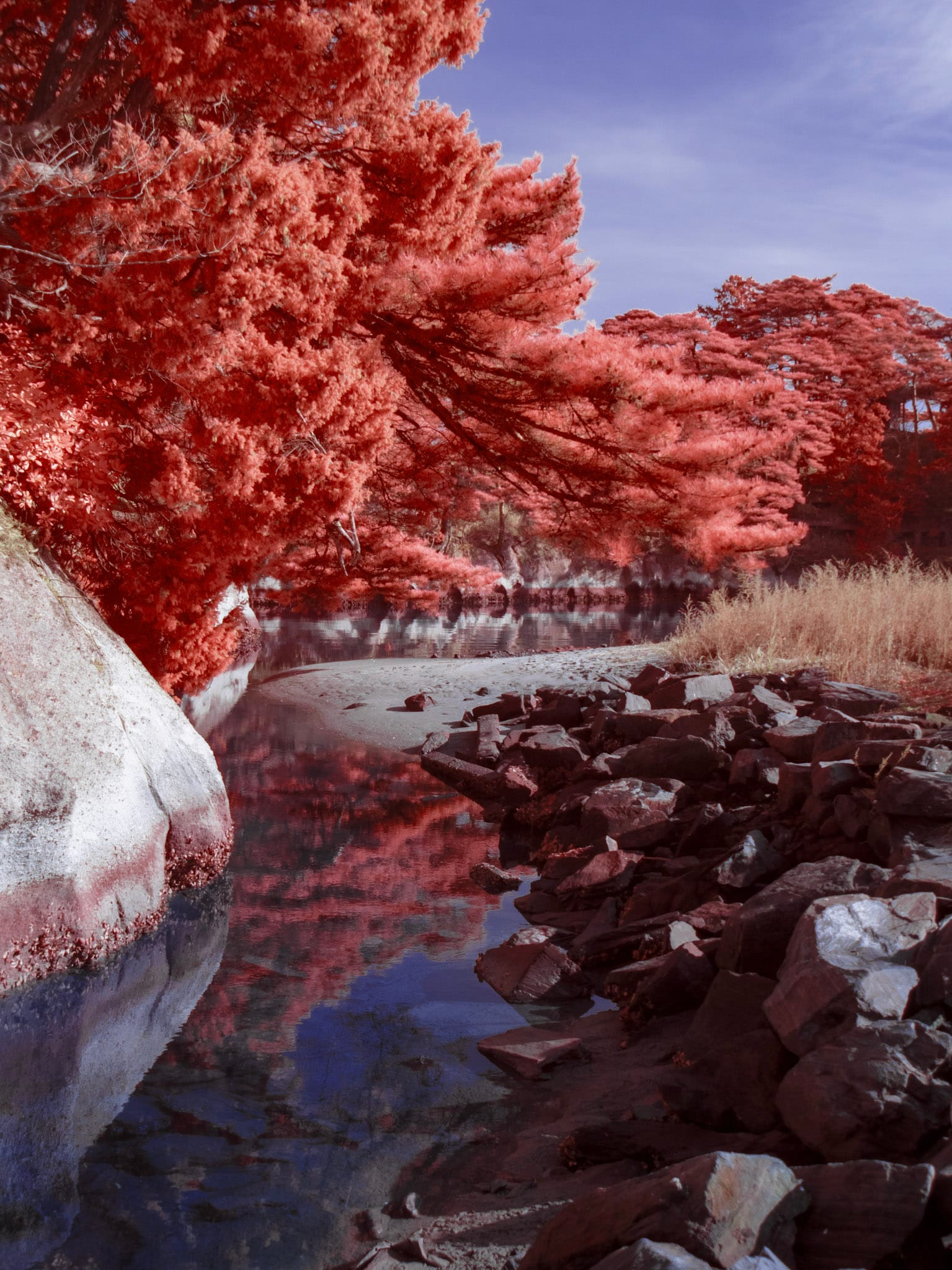
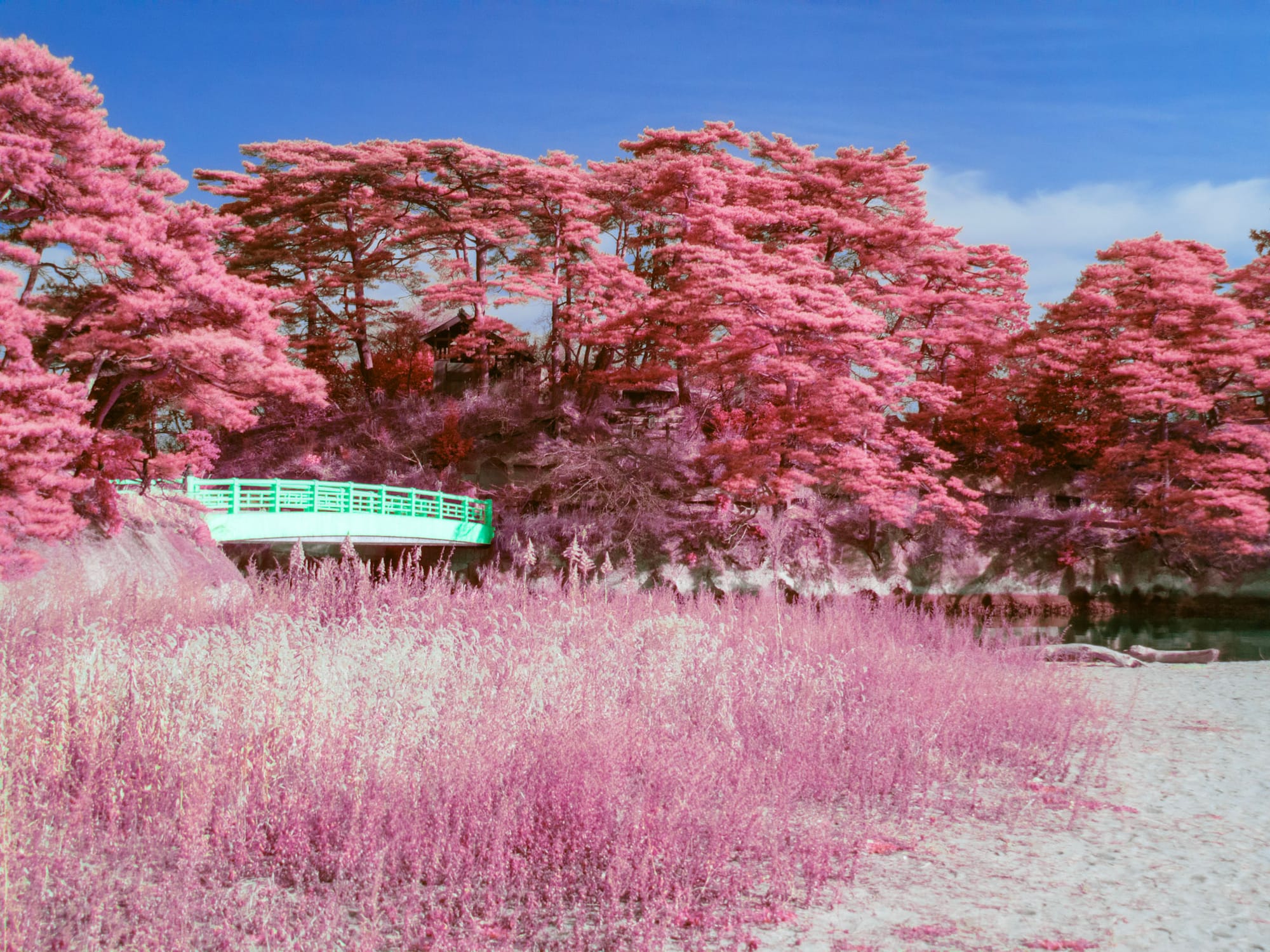
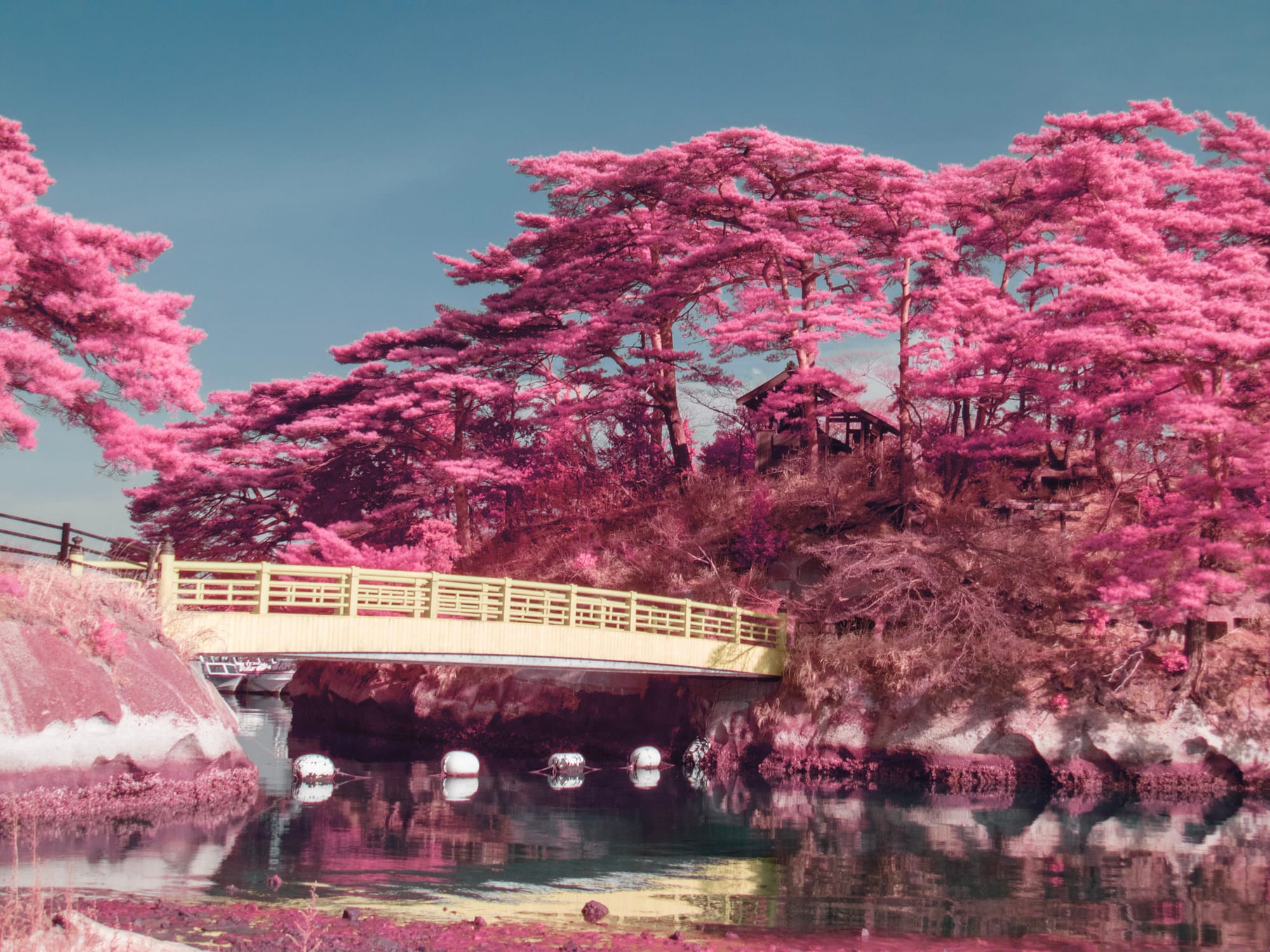
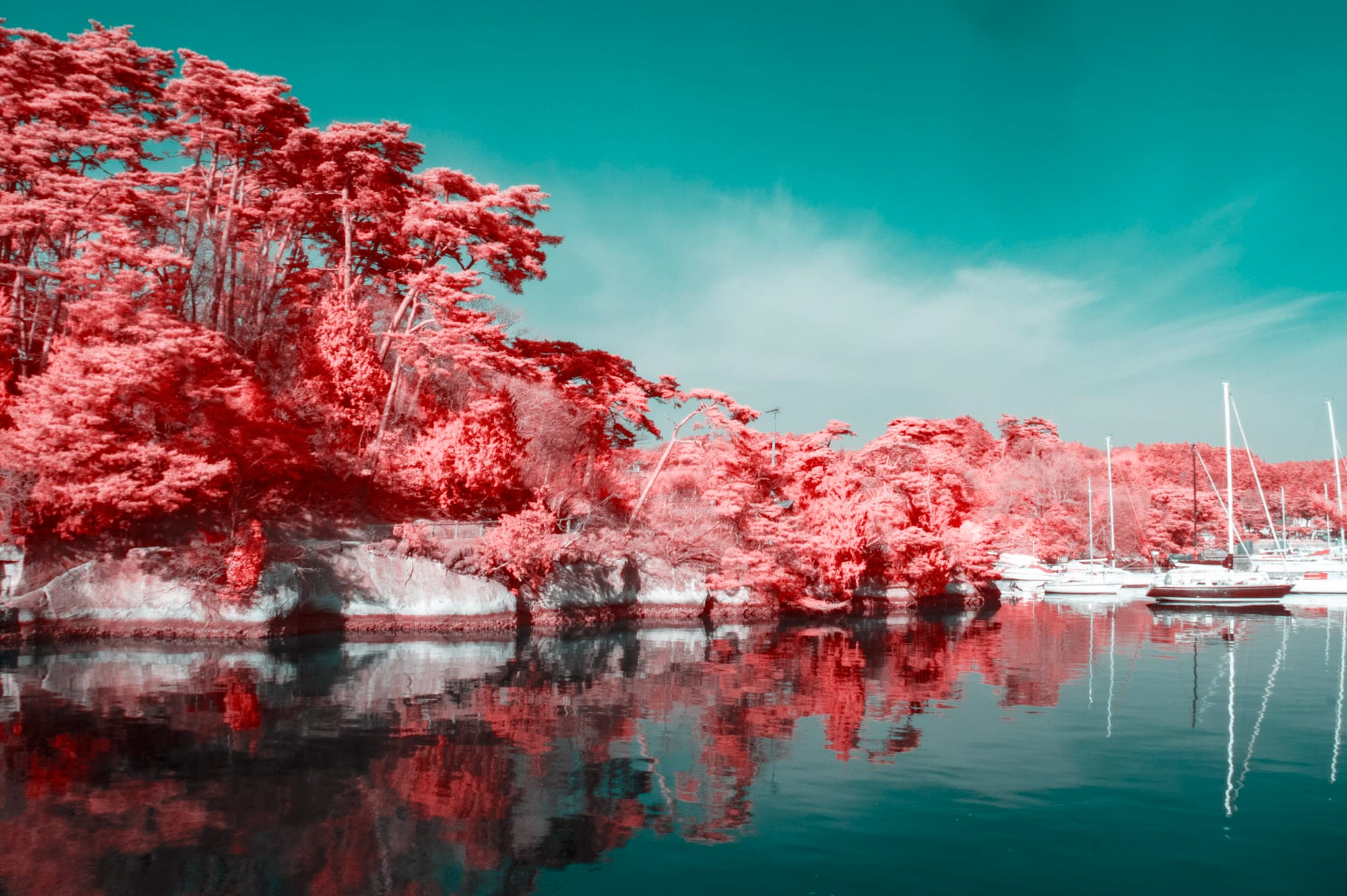
Links and Related Resources
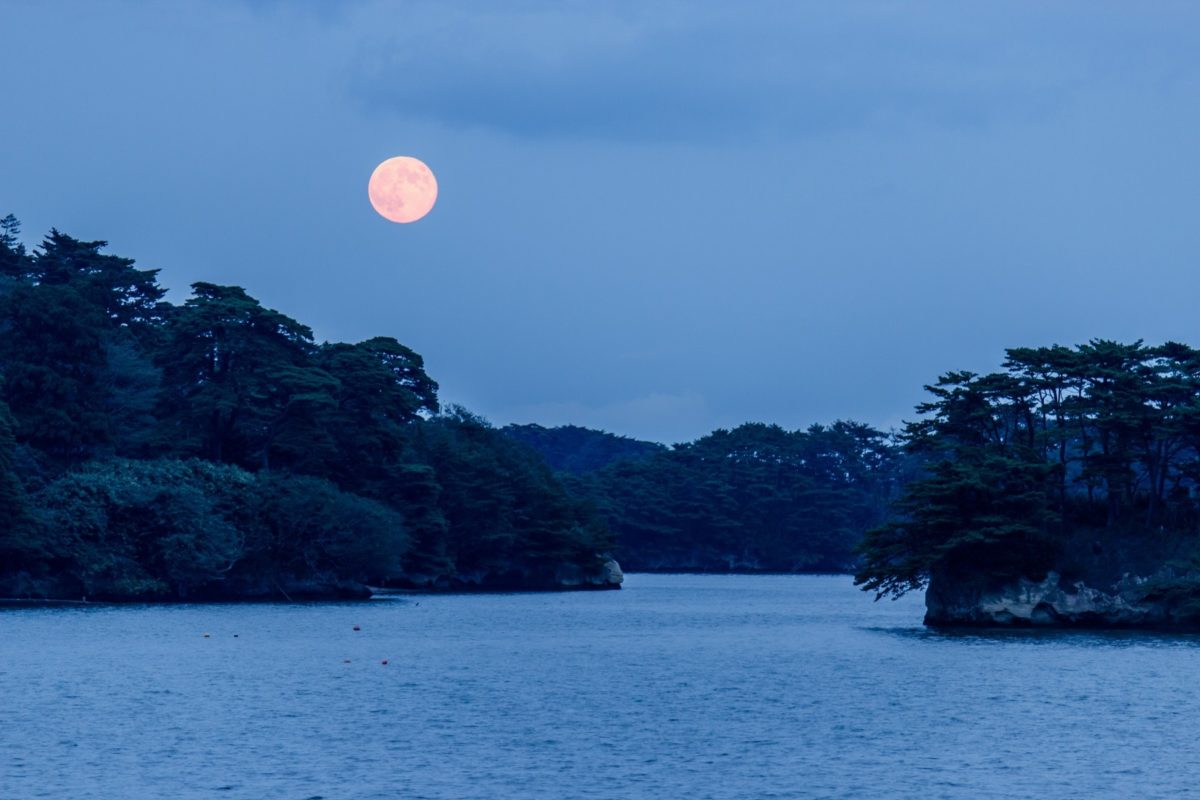
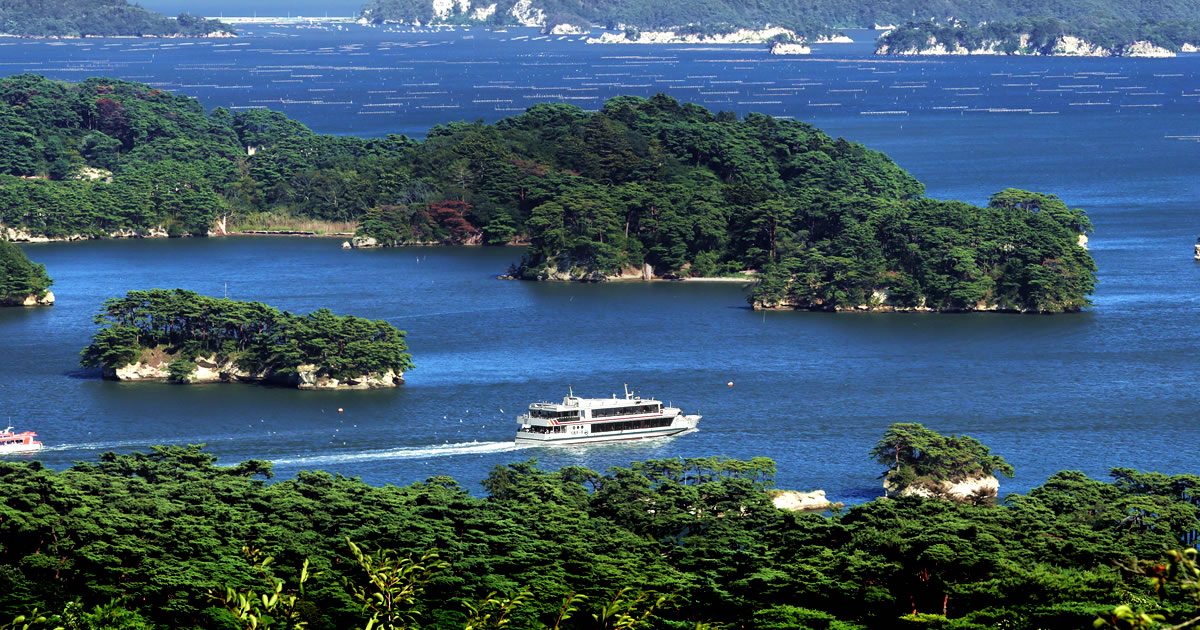
Three Views of Japan, Matsushima Site

Matsushima Town Webpage on Oshima



